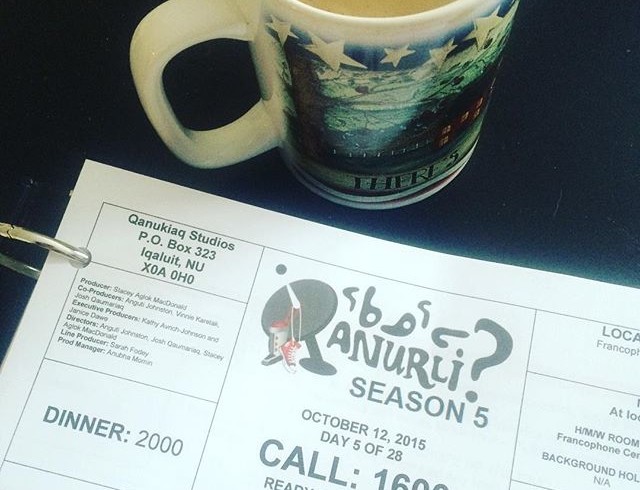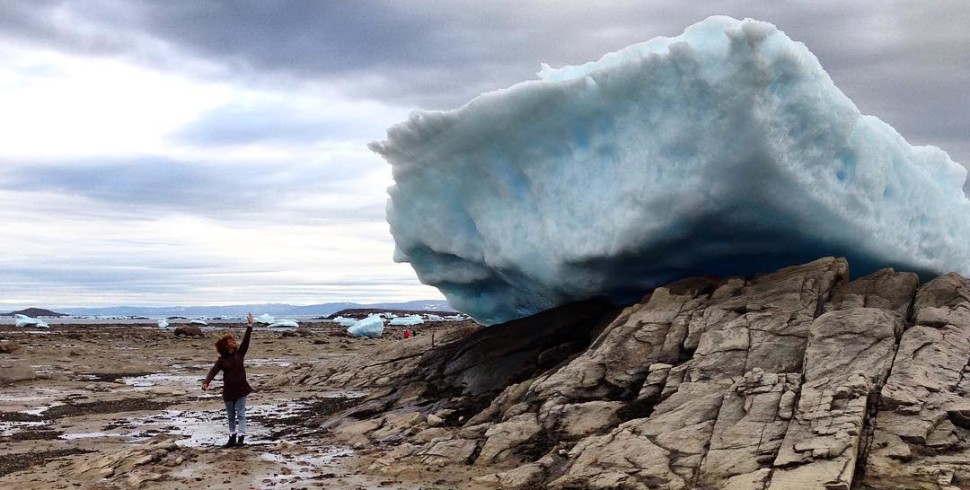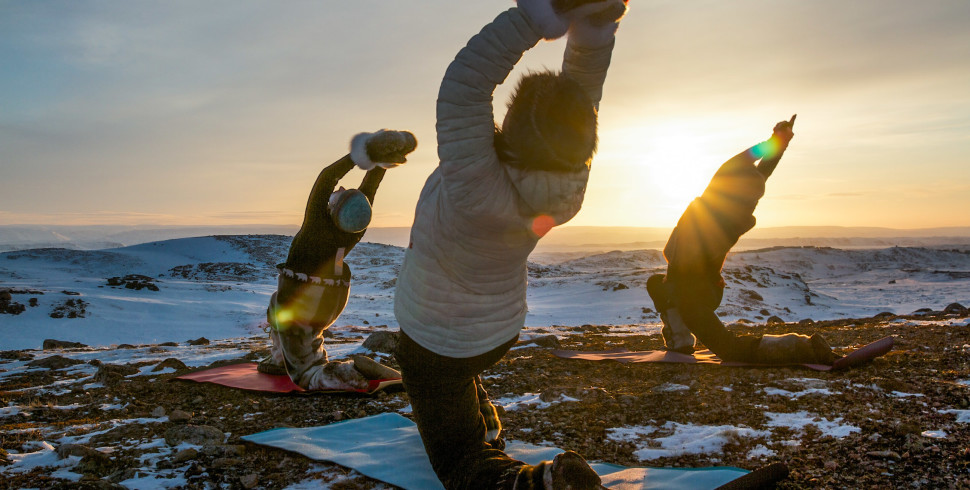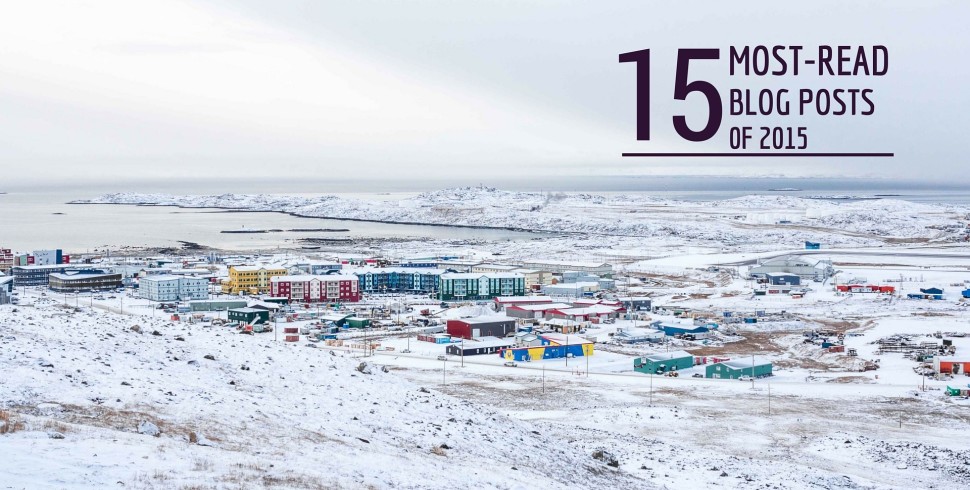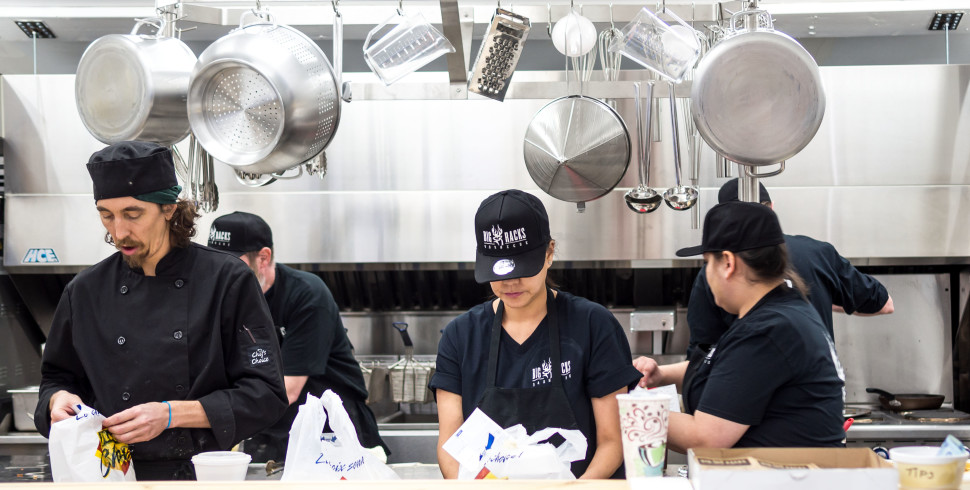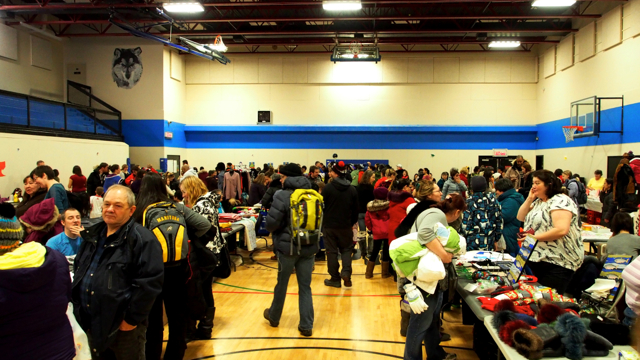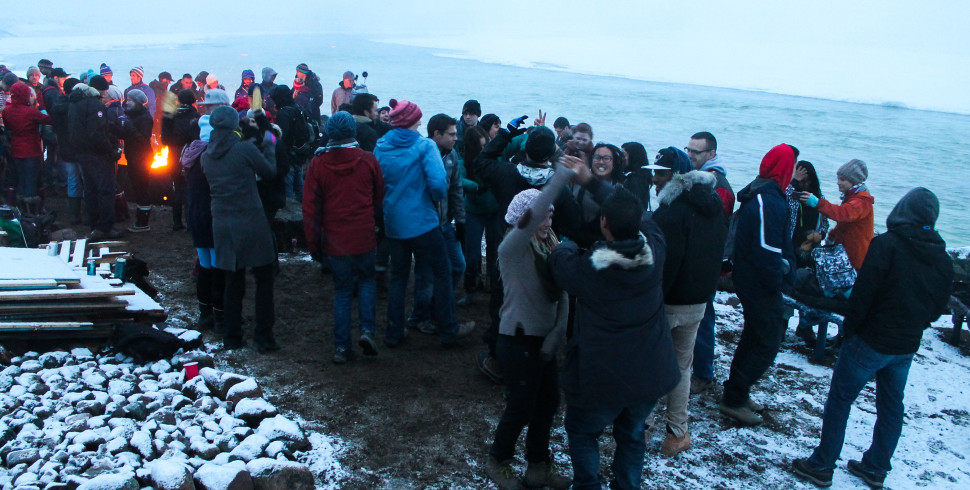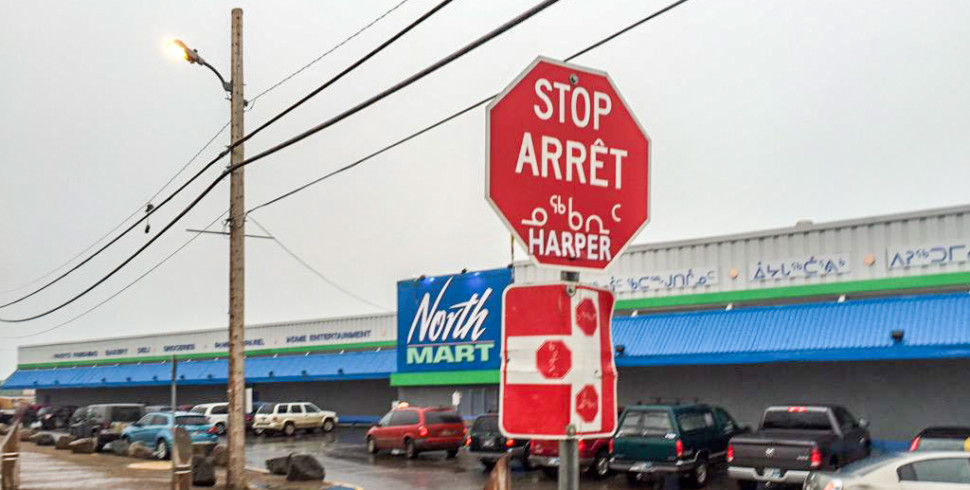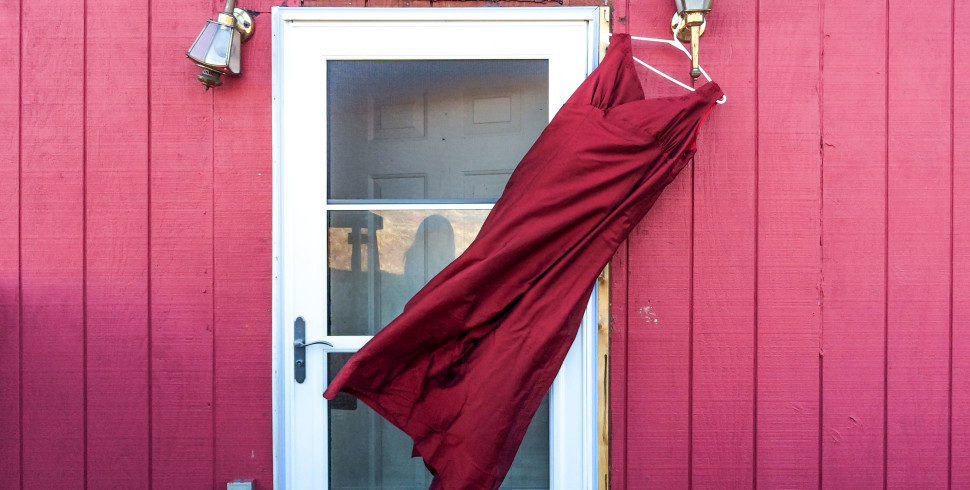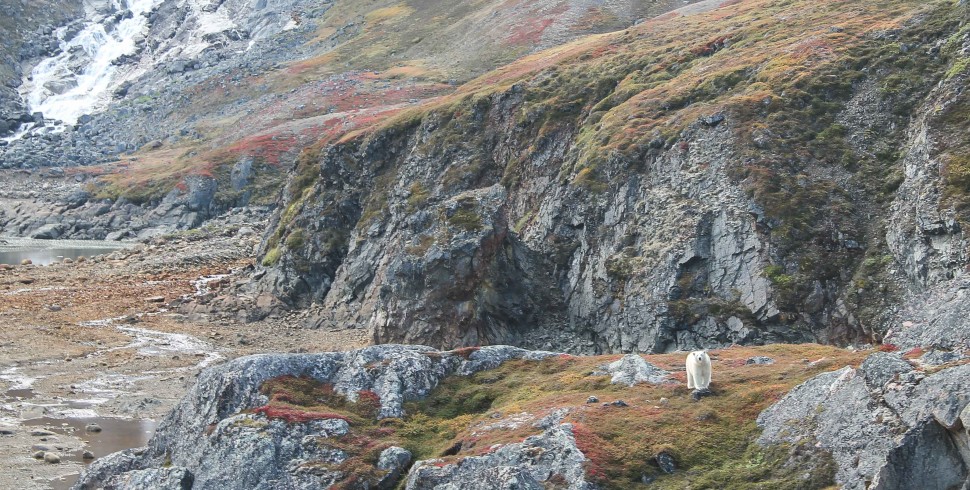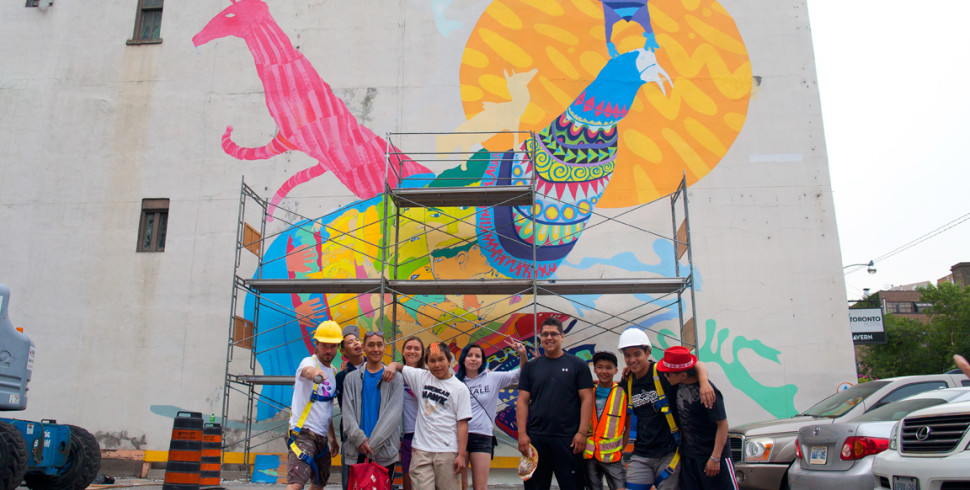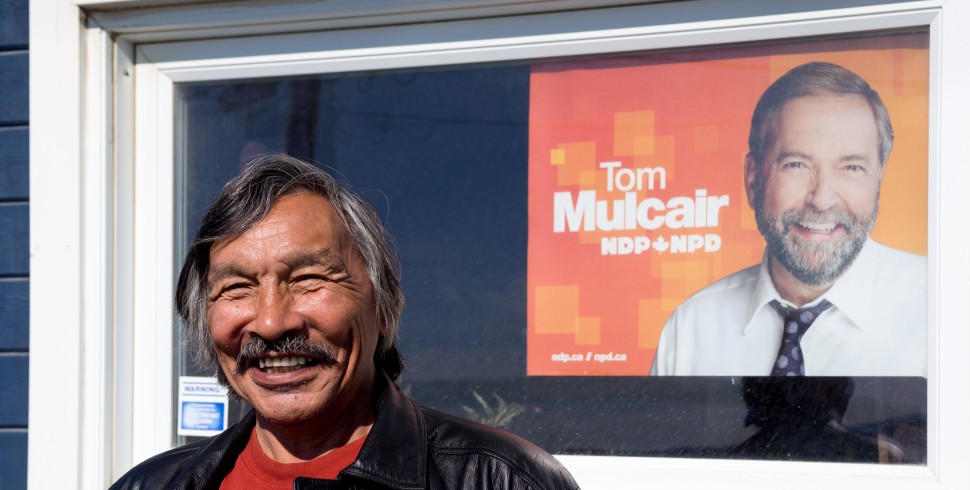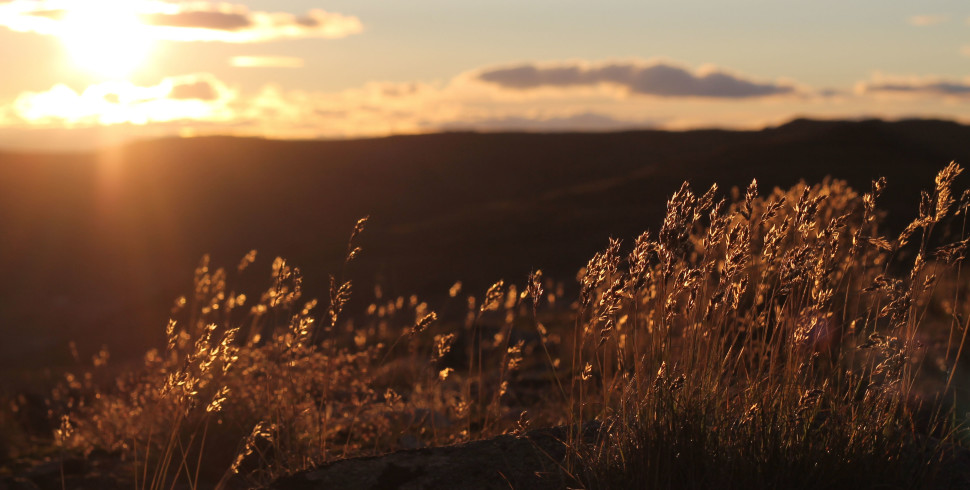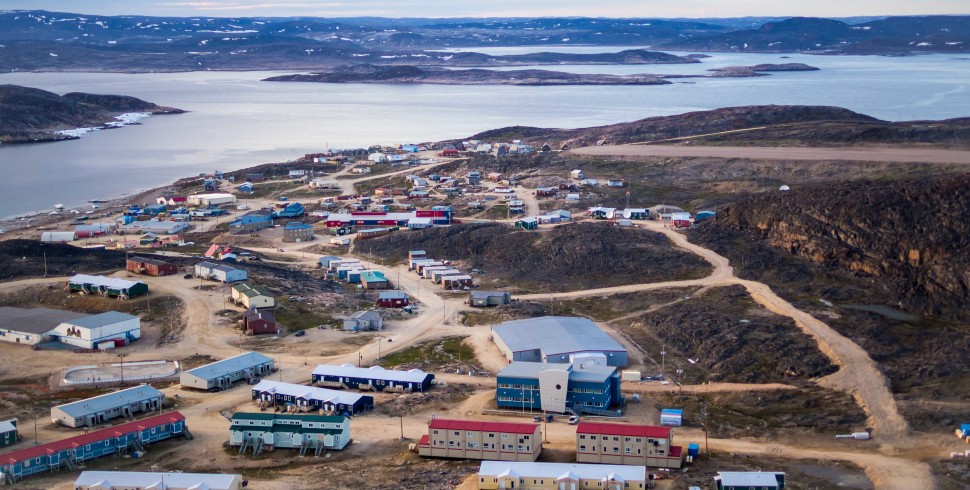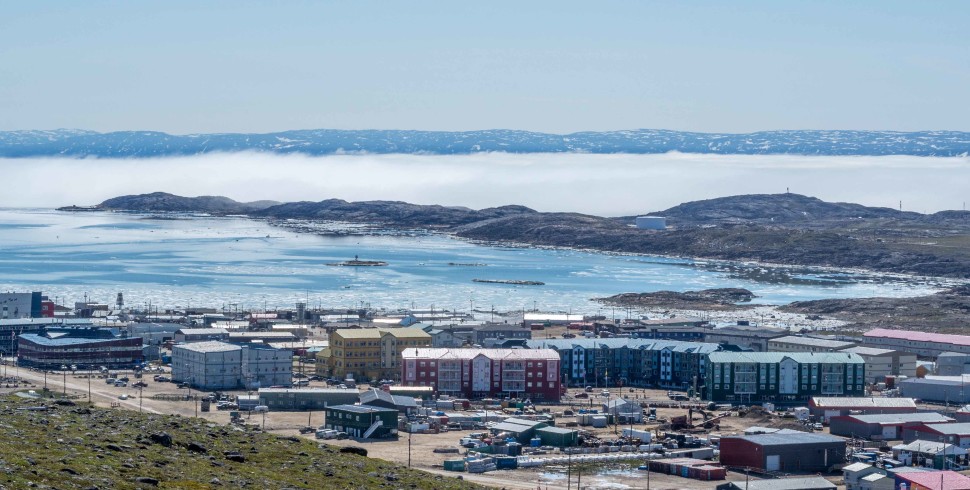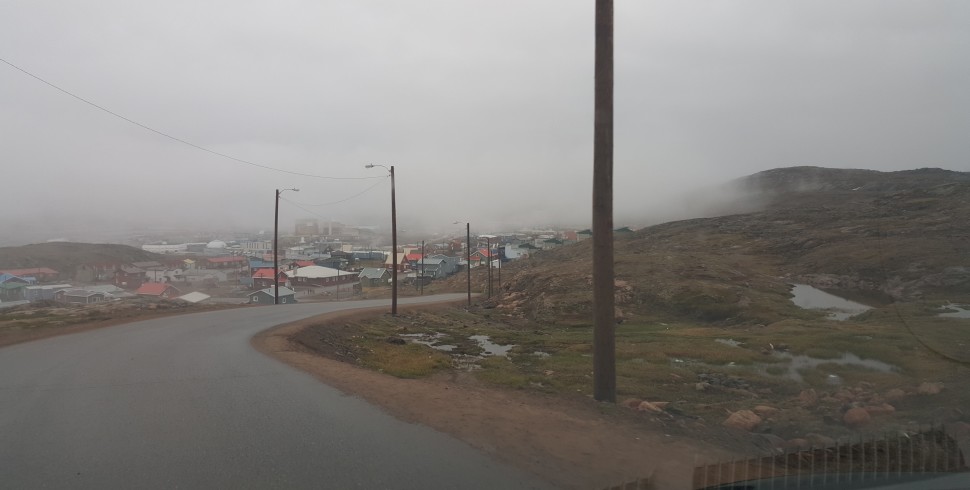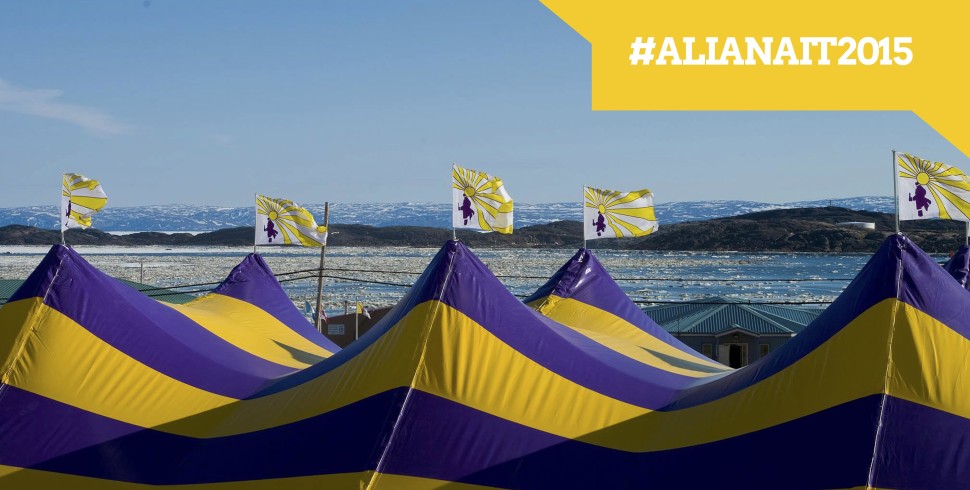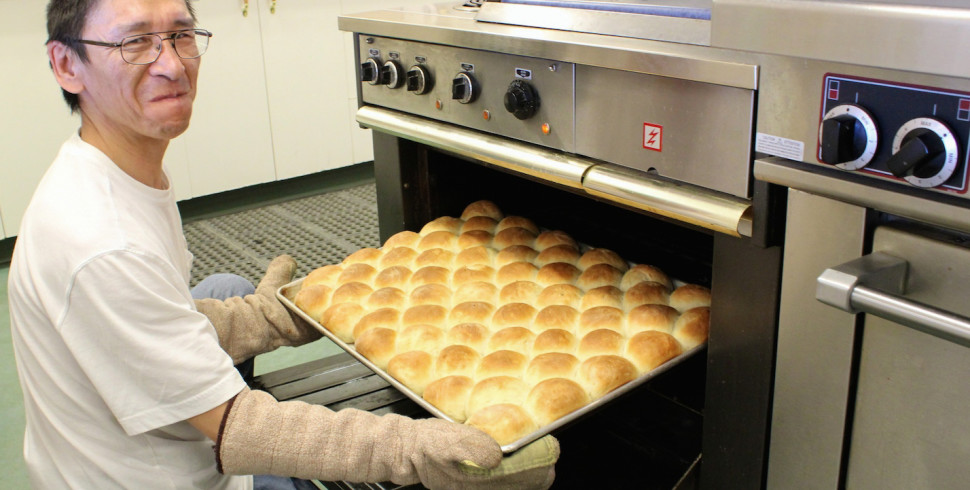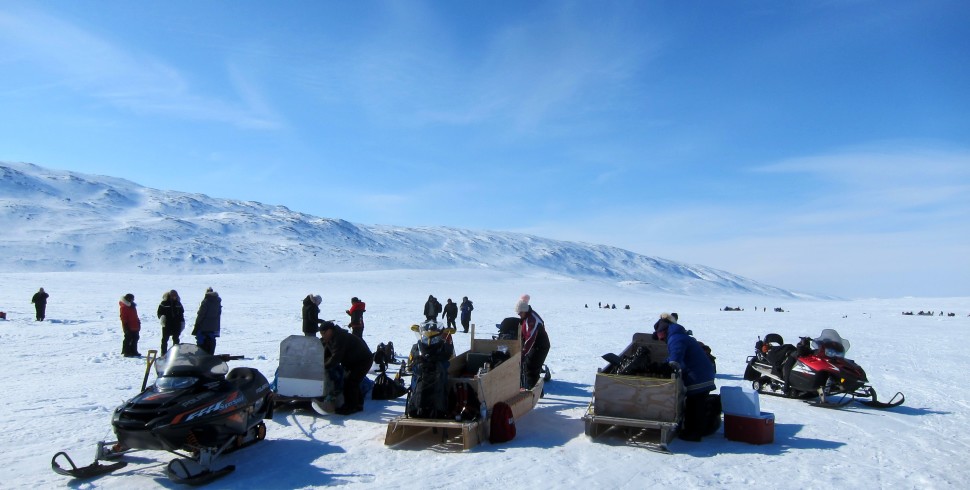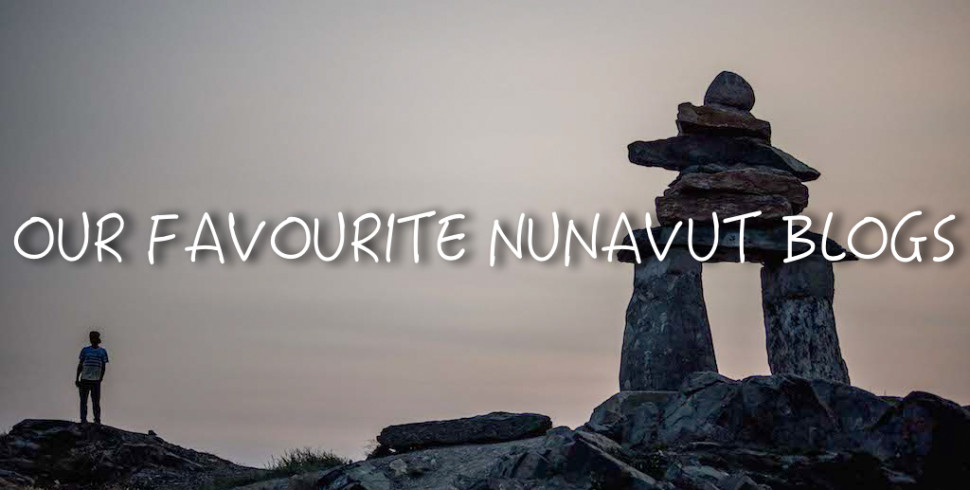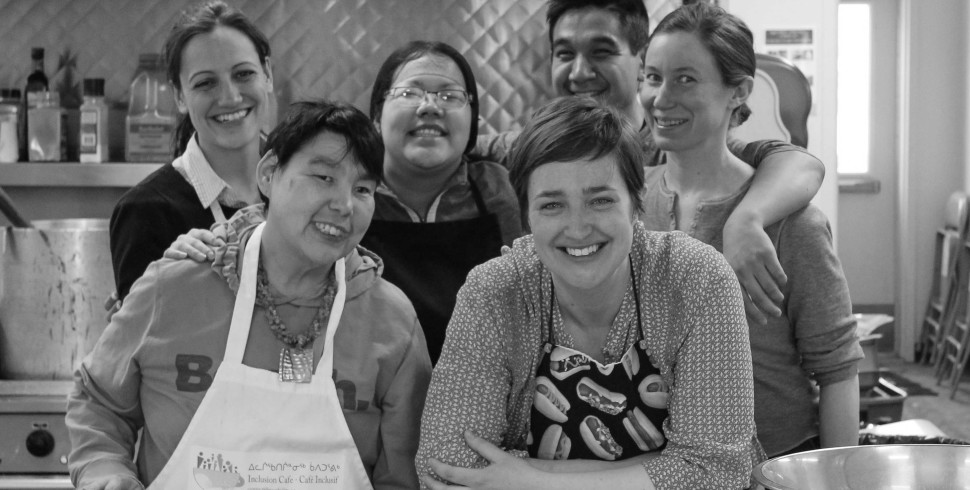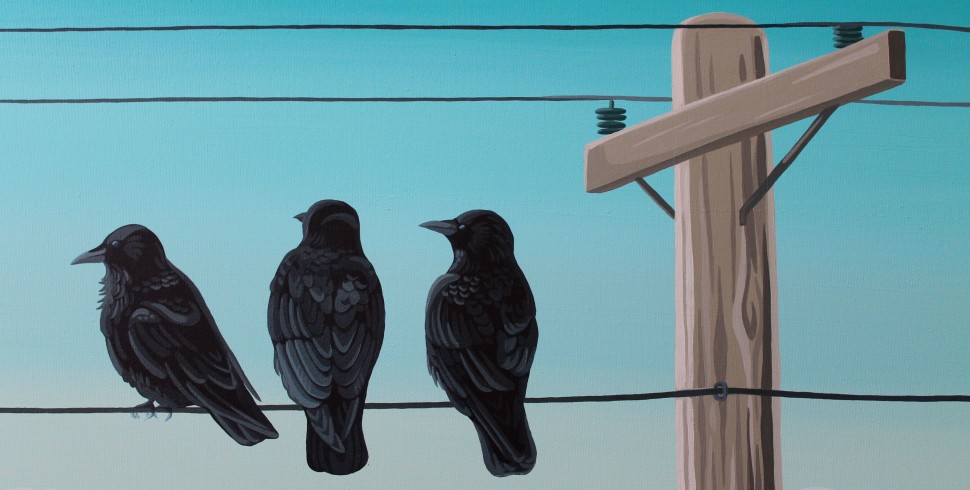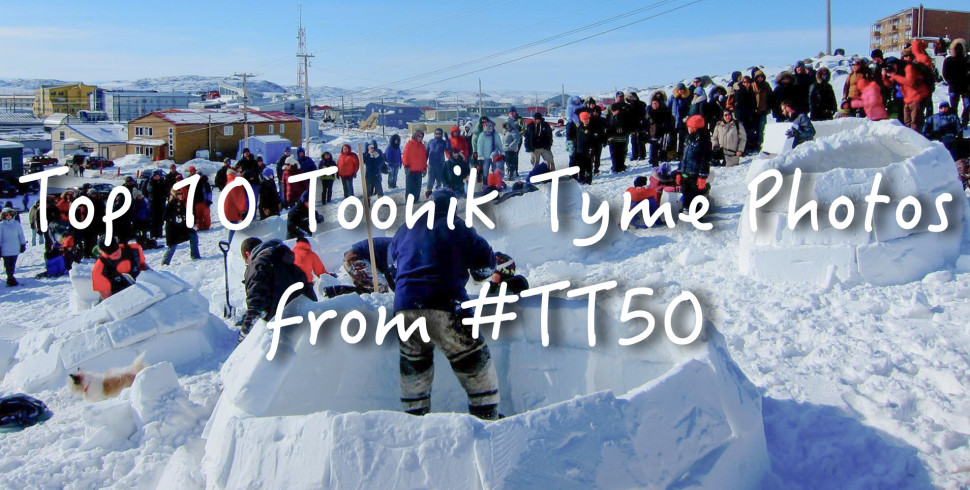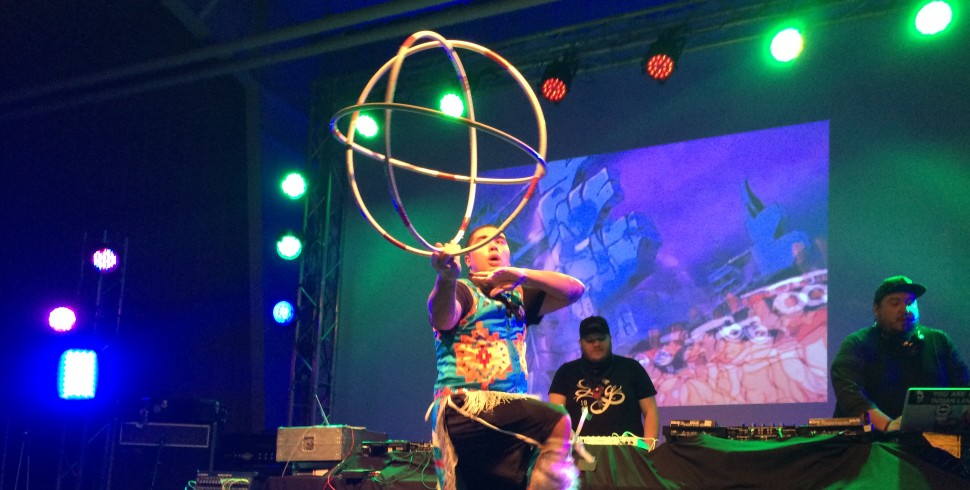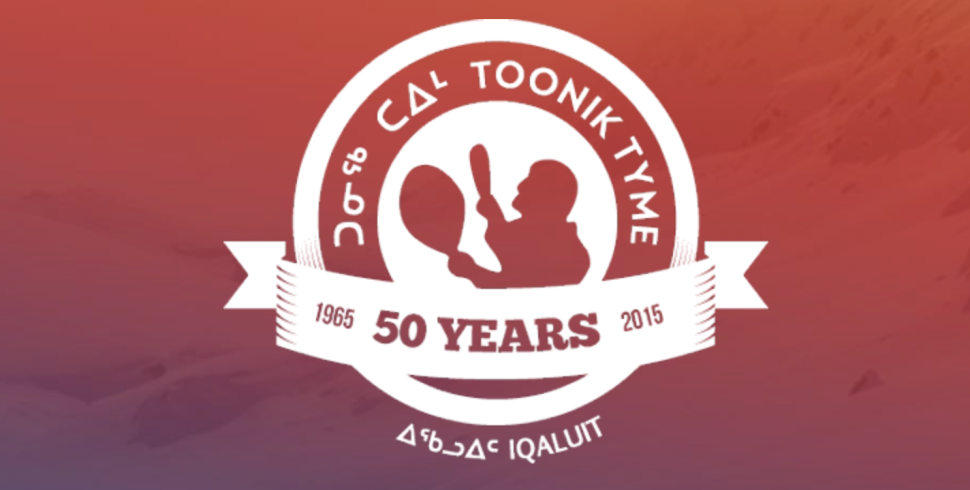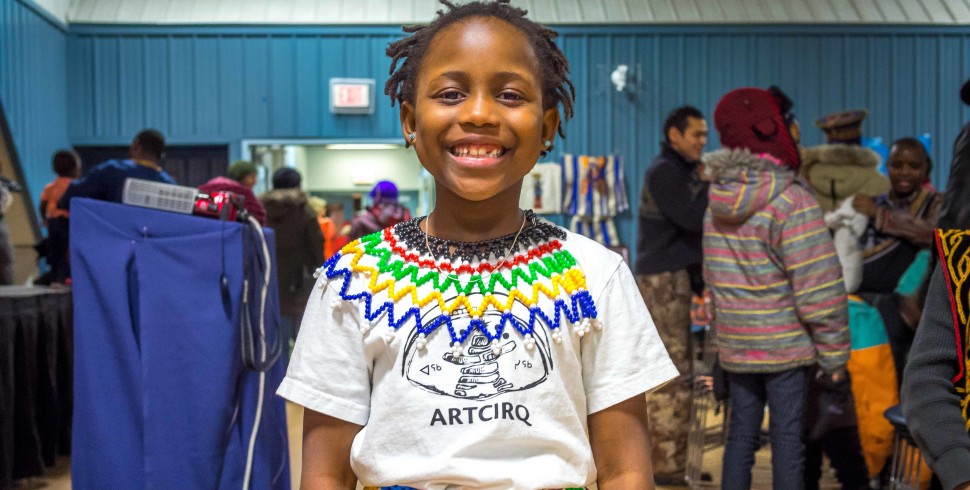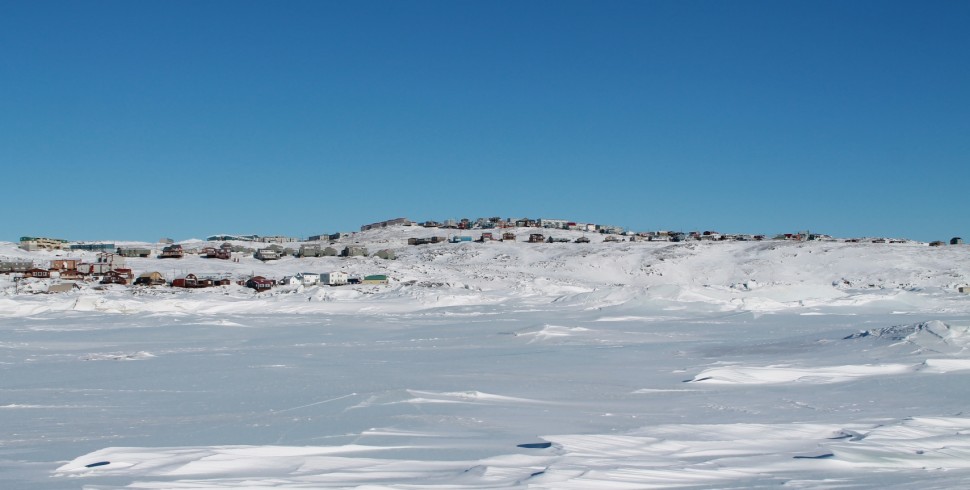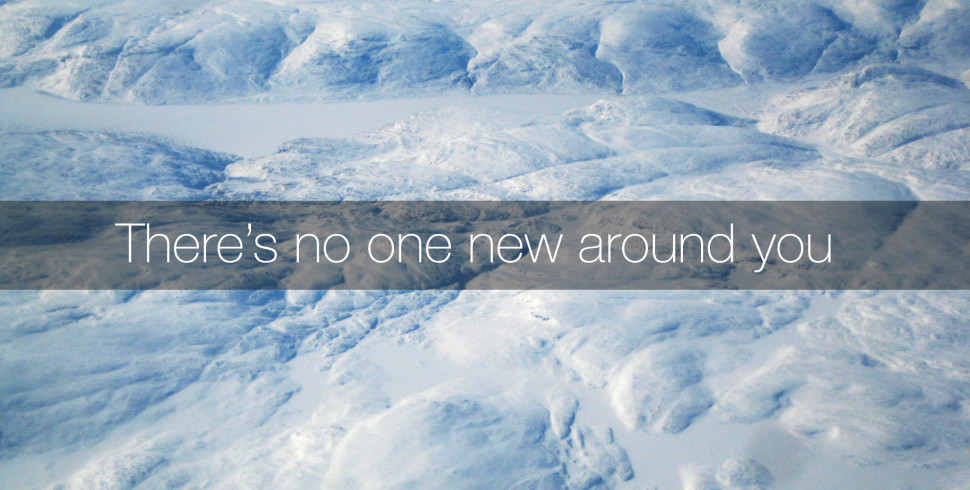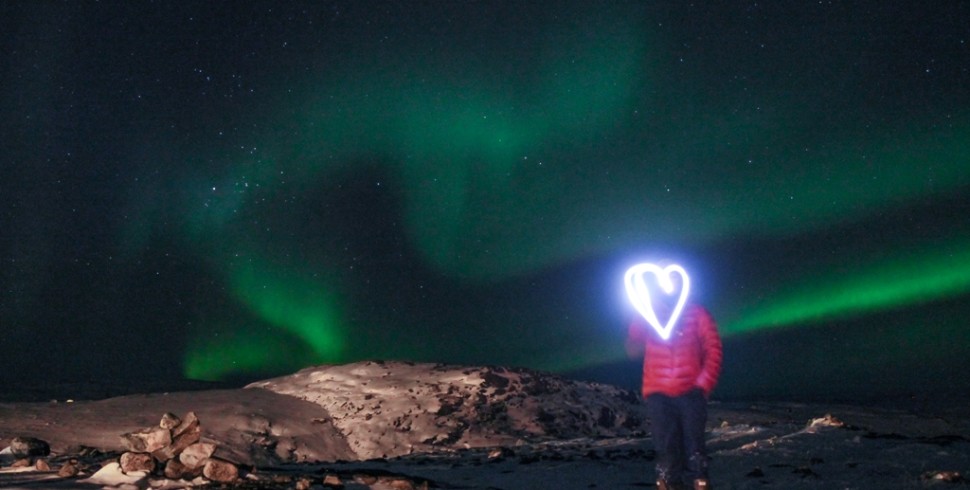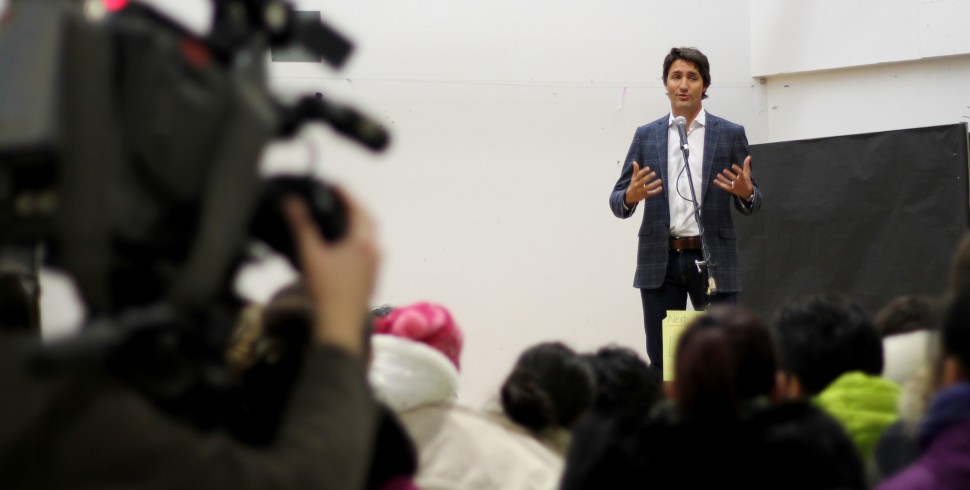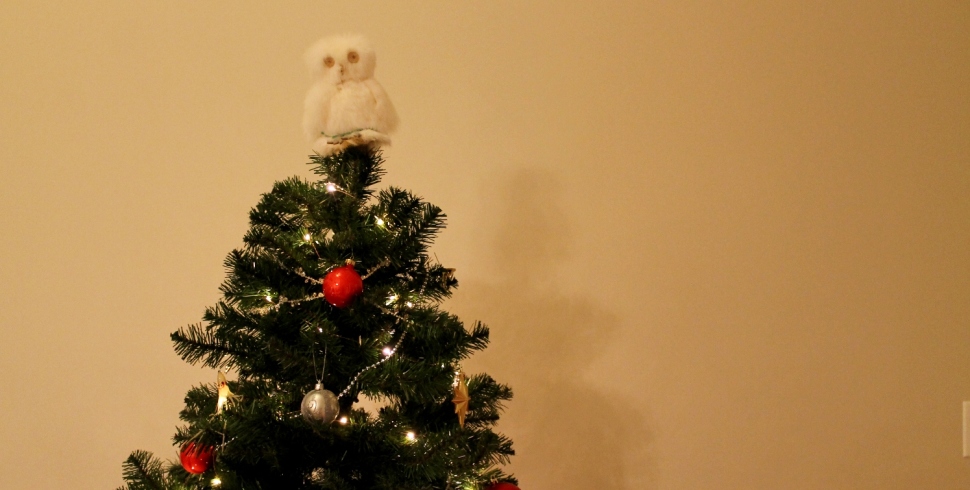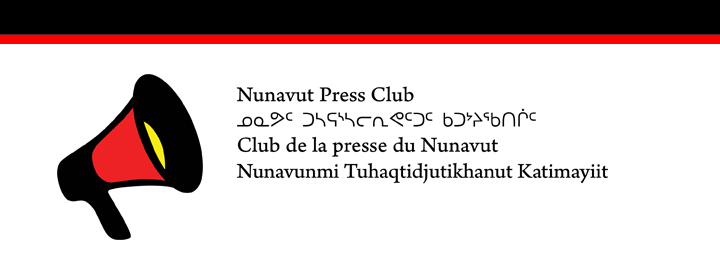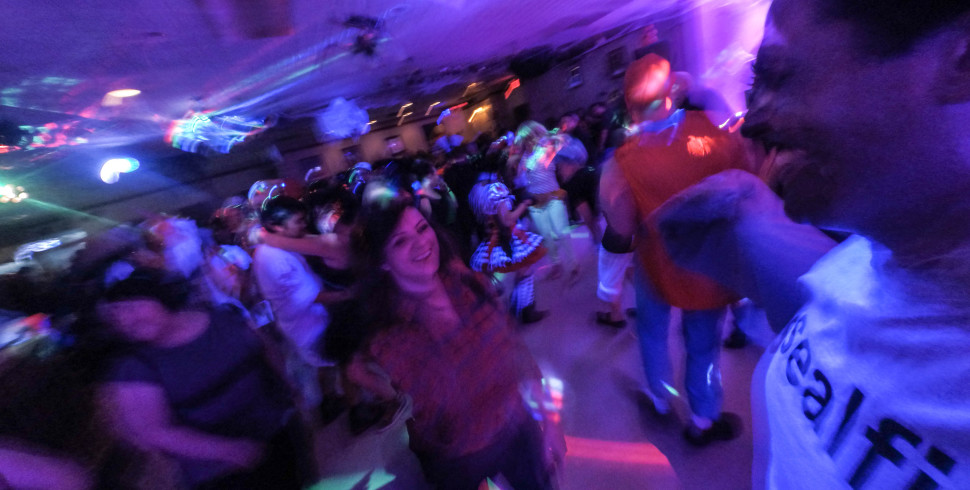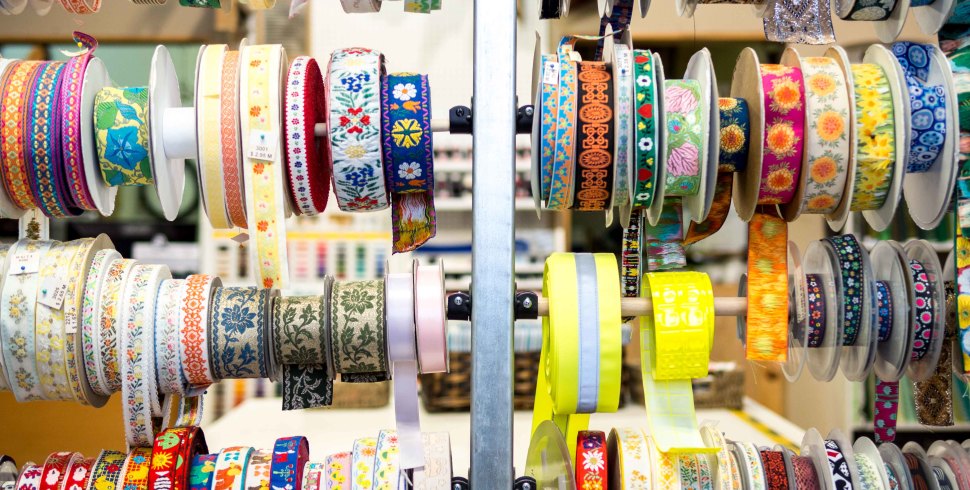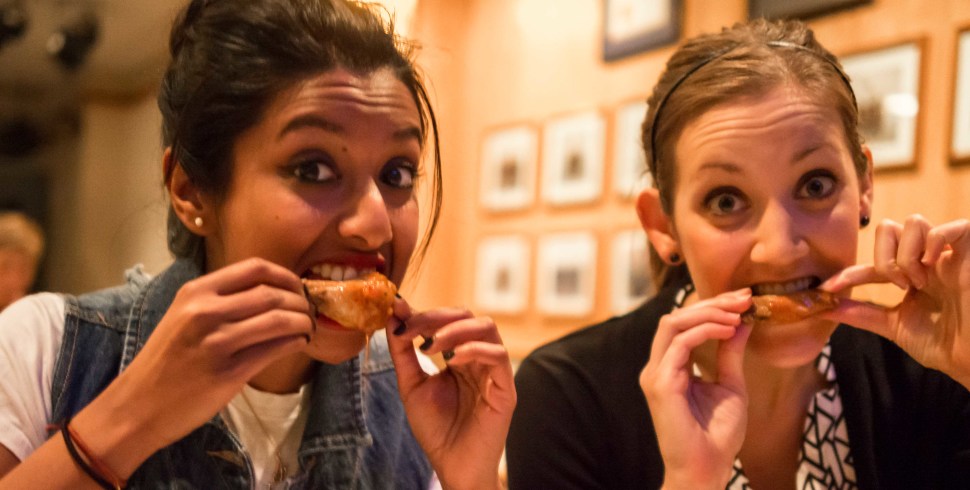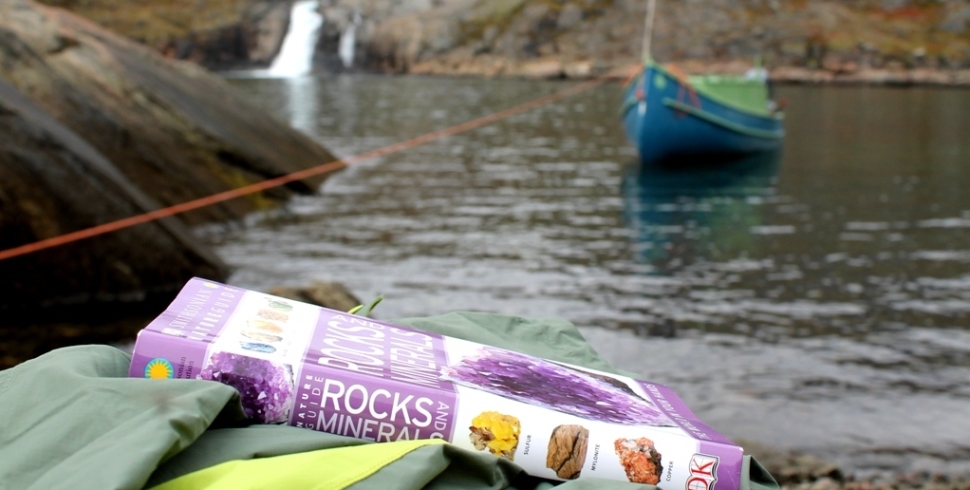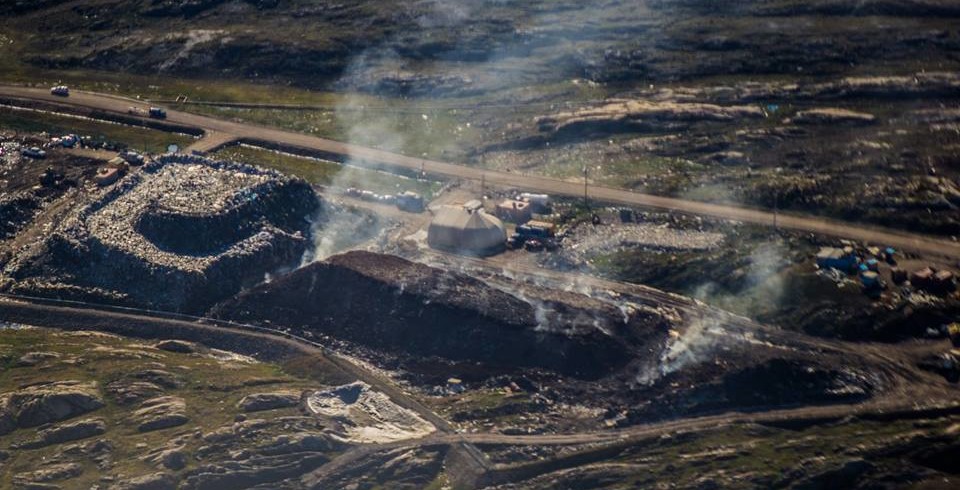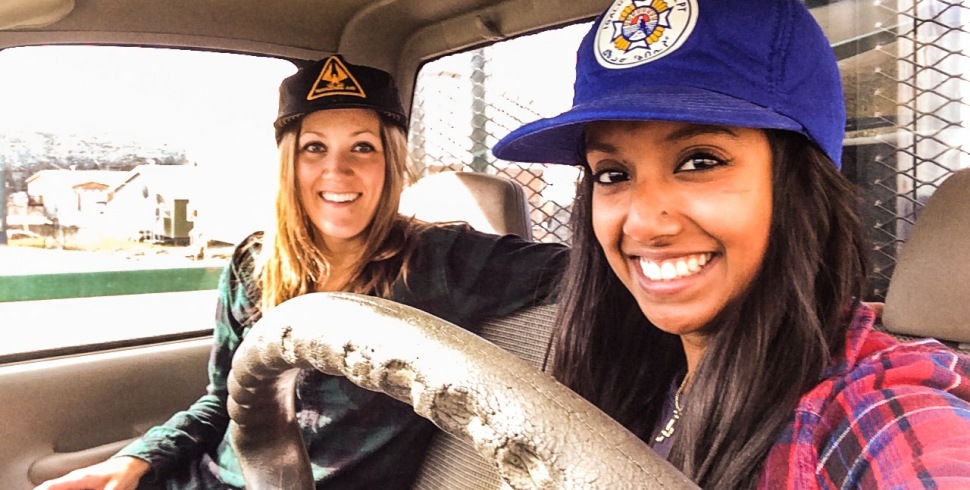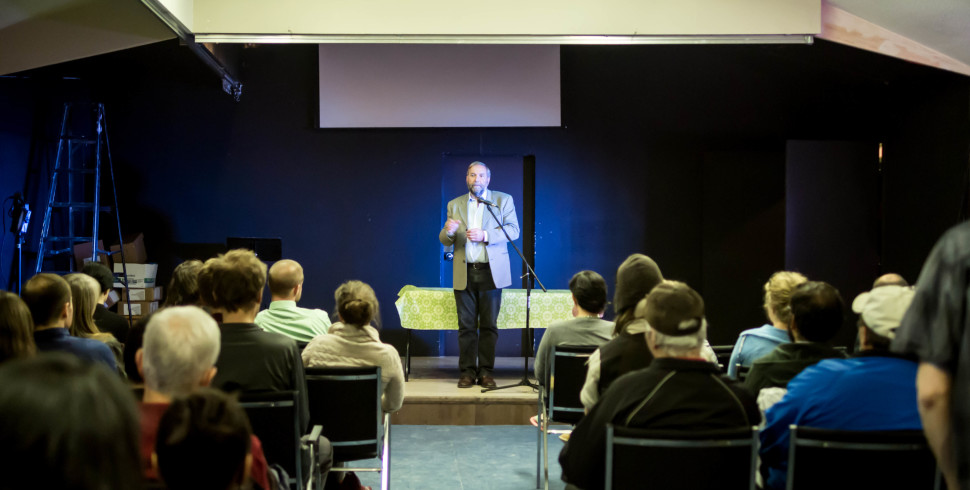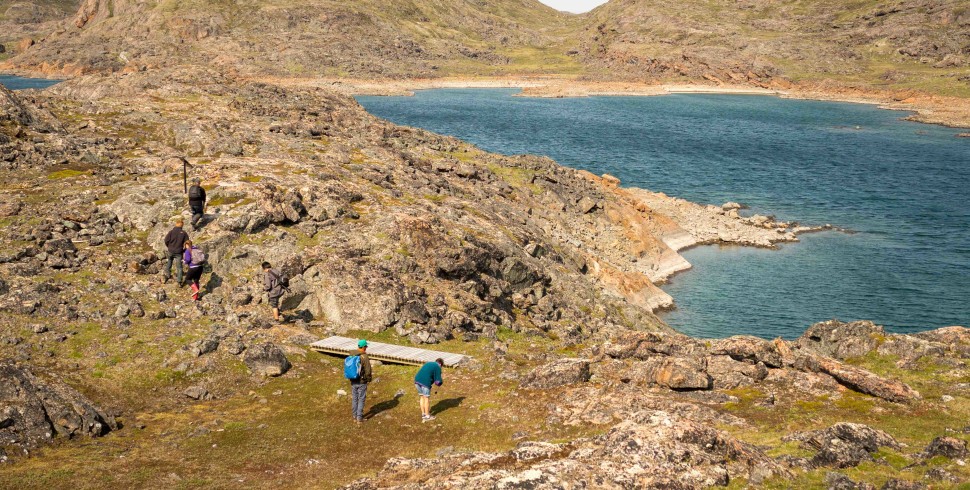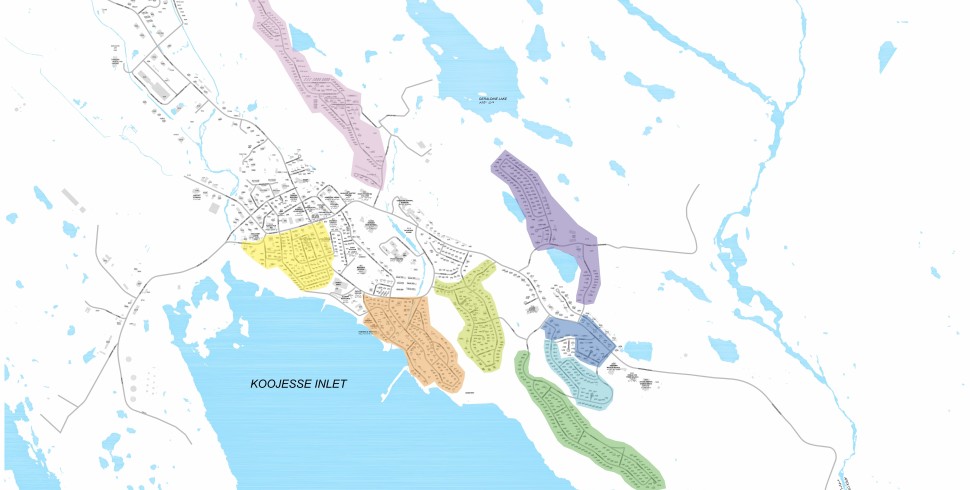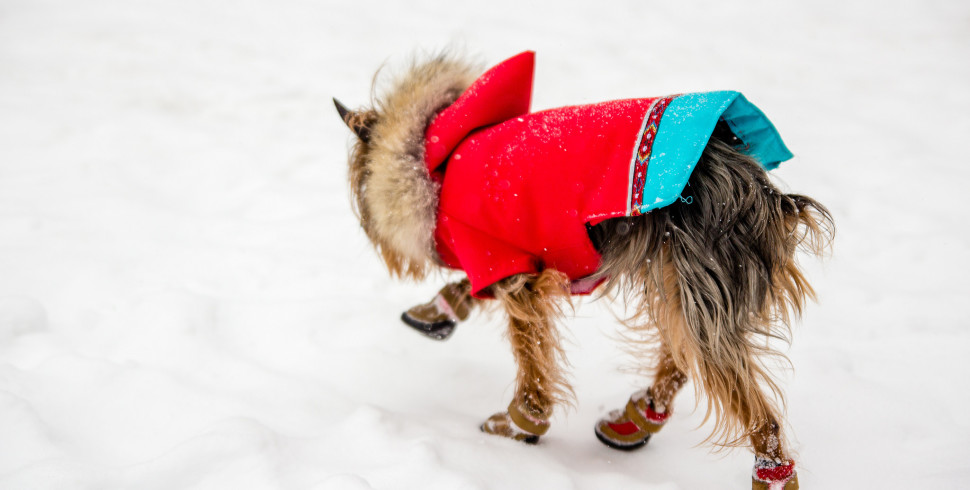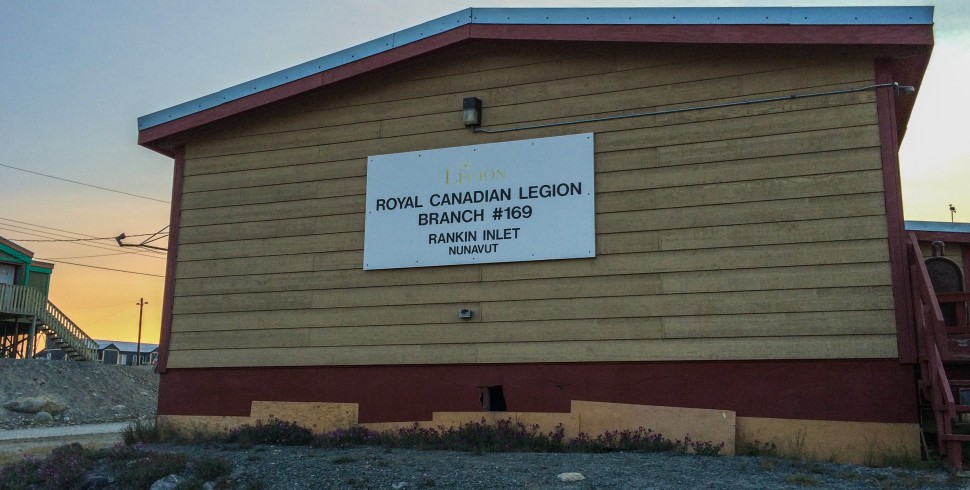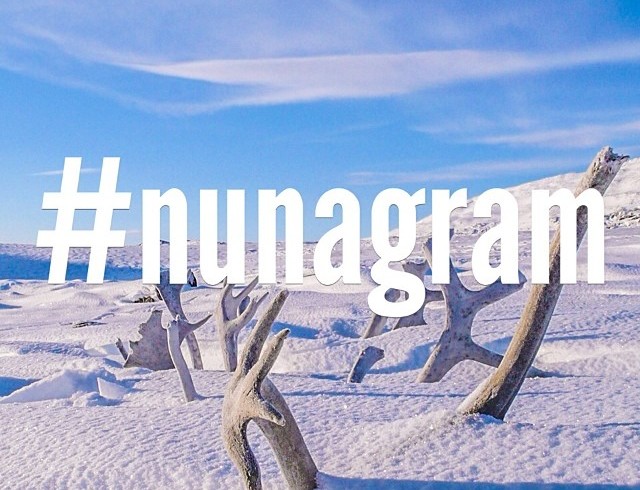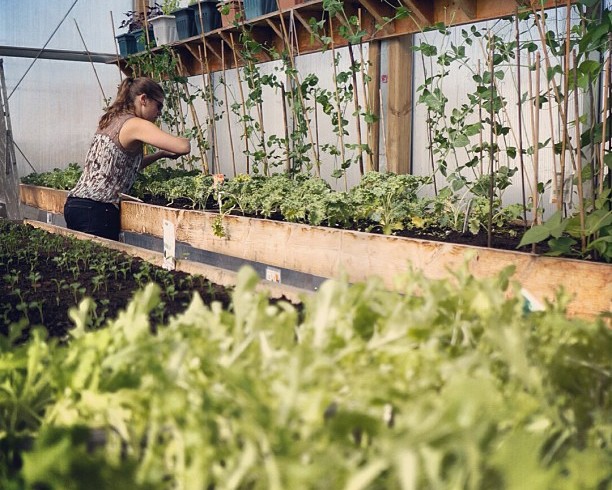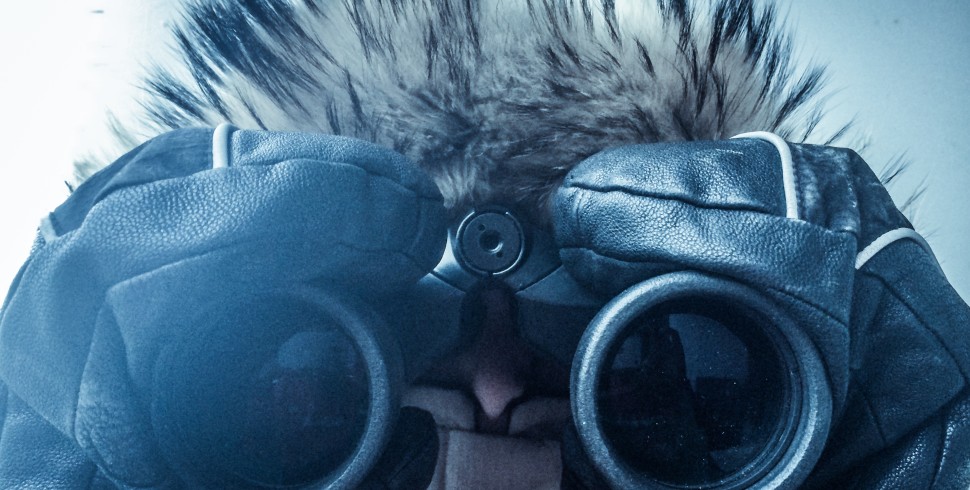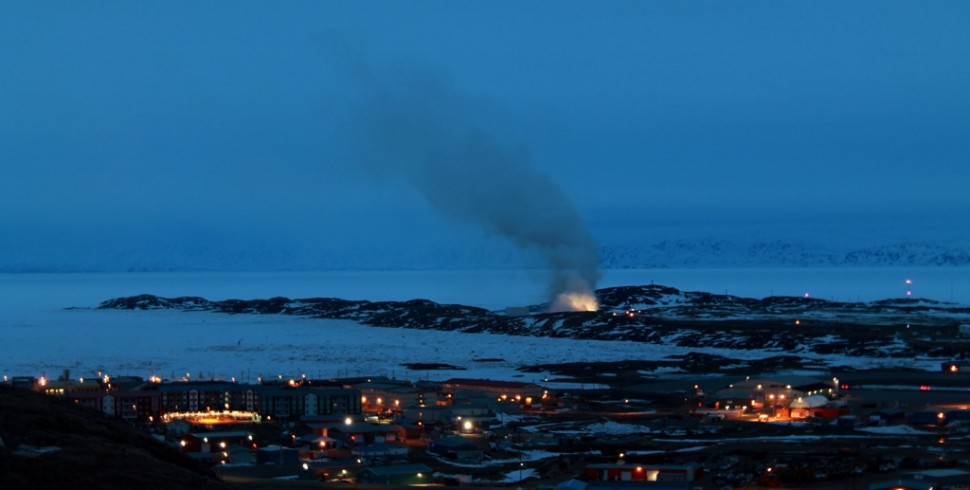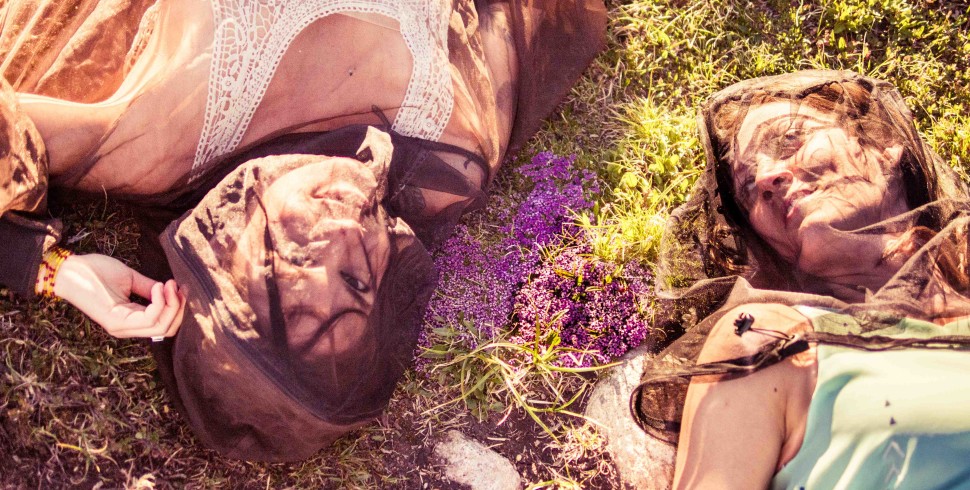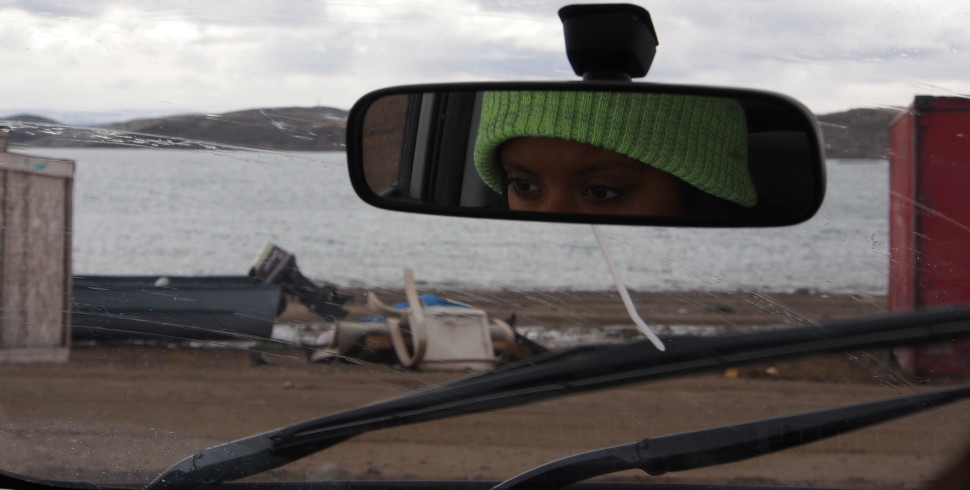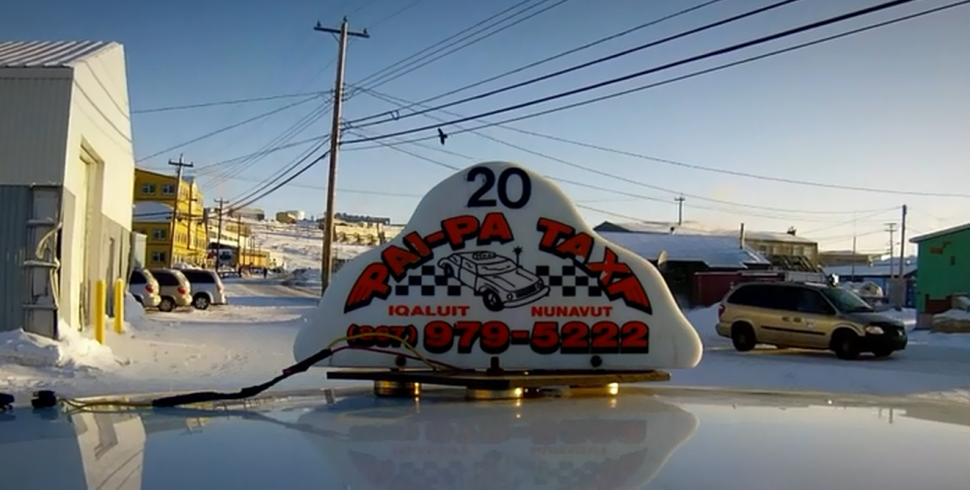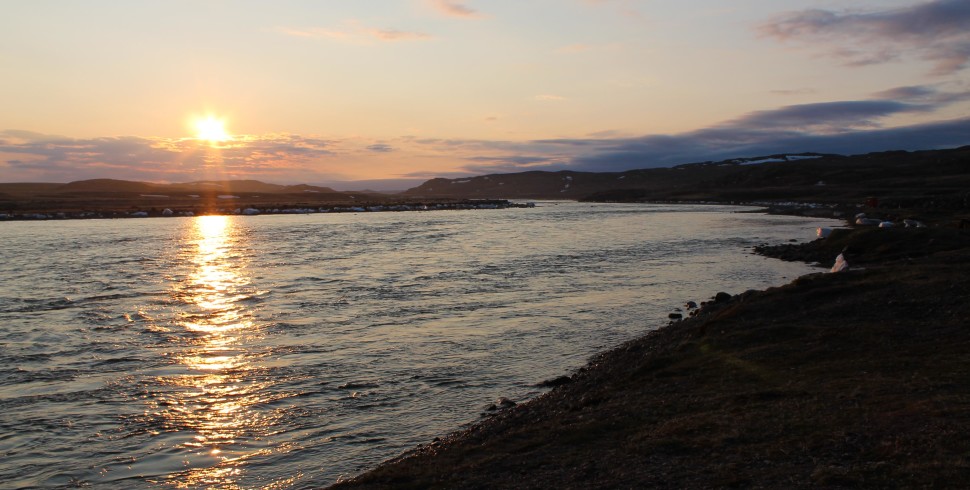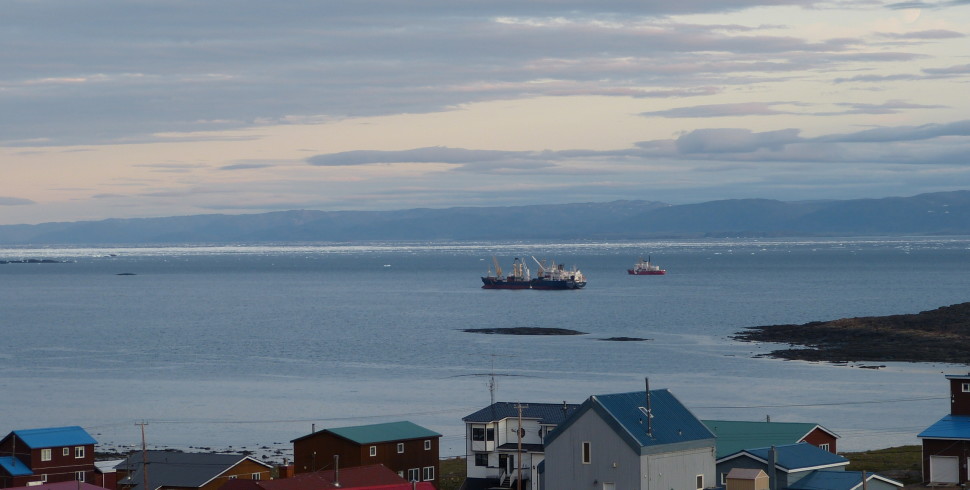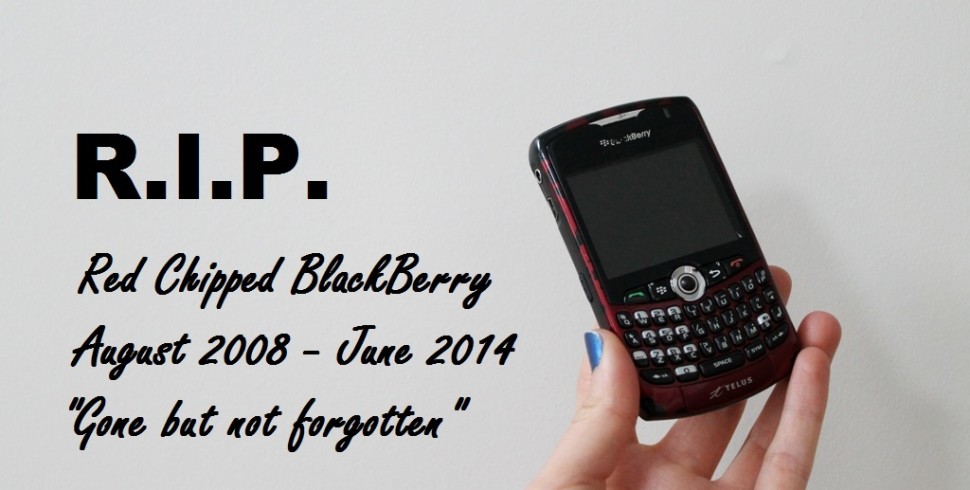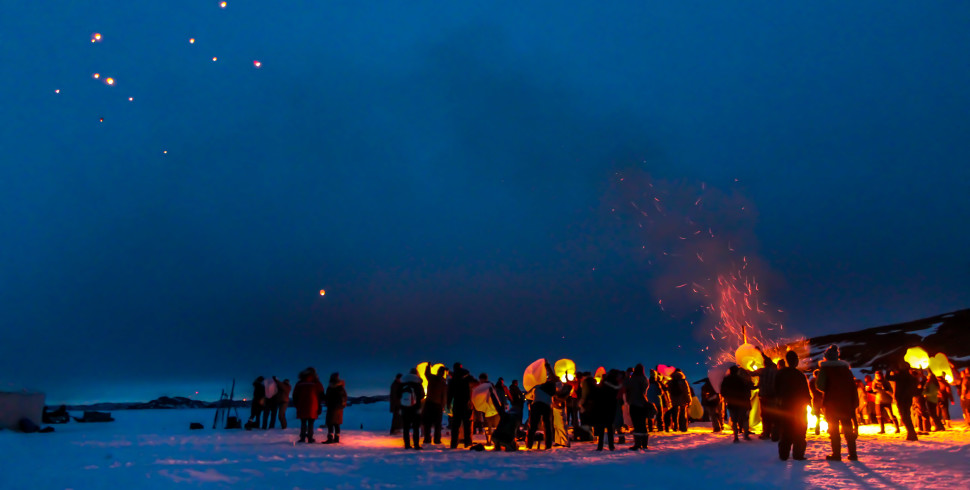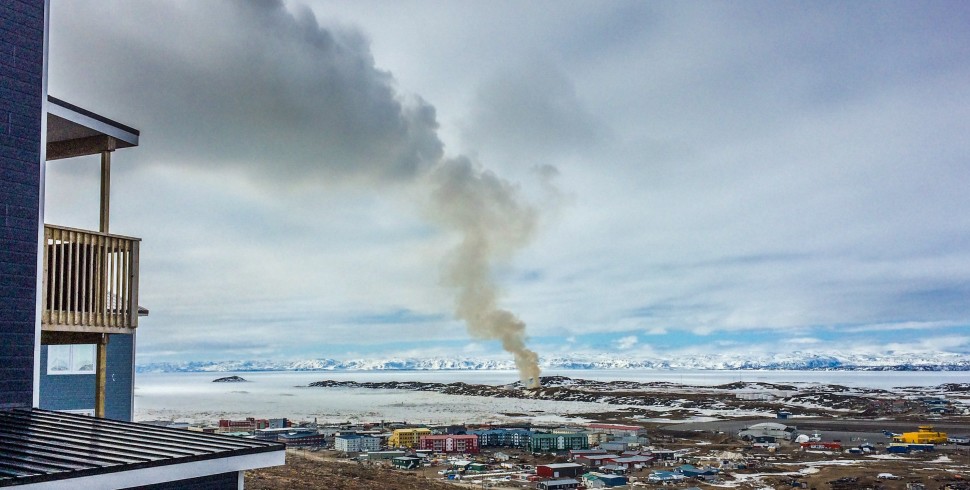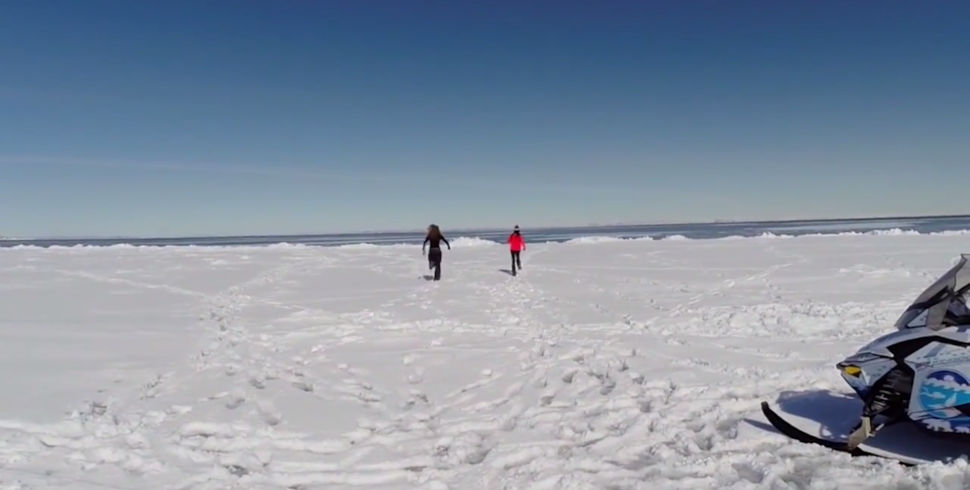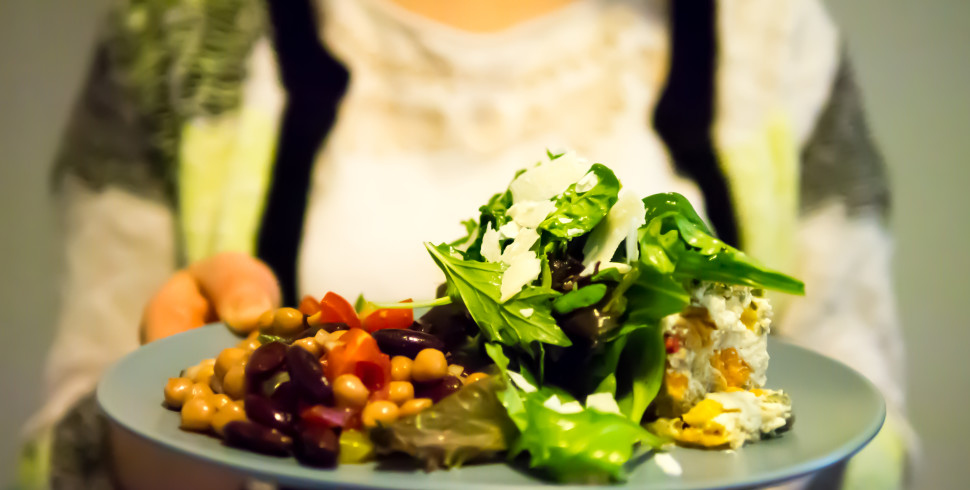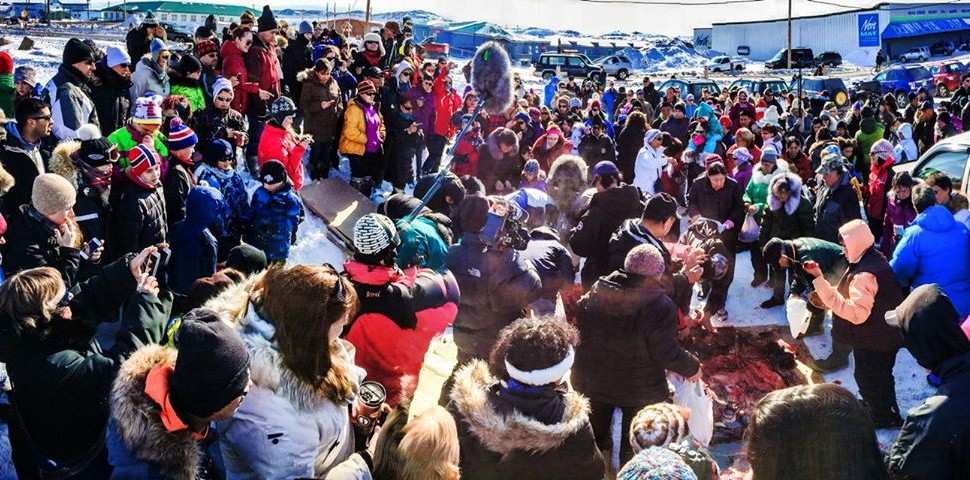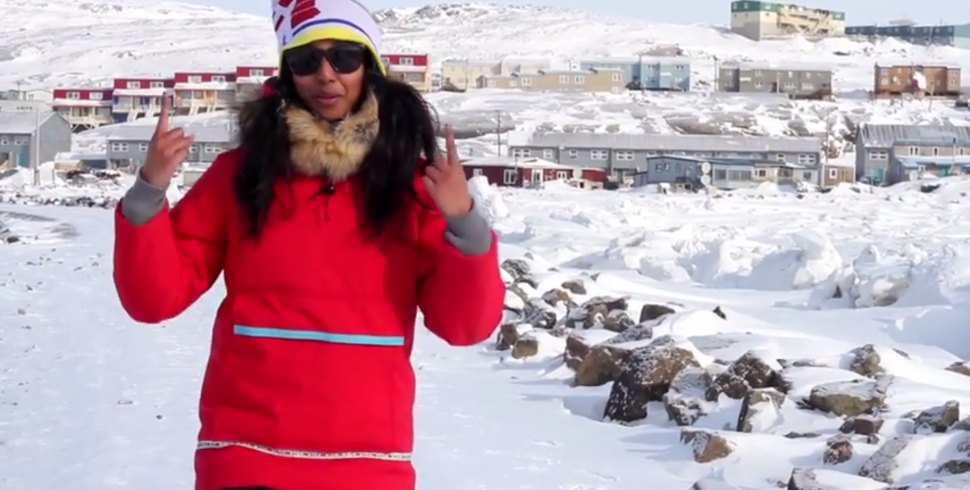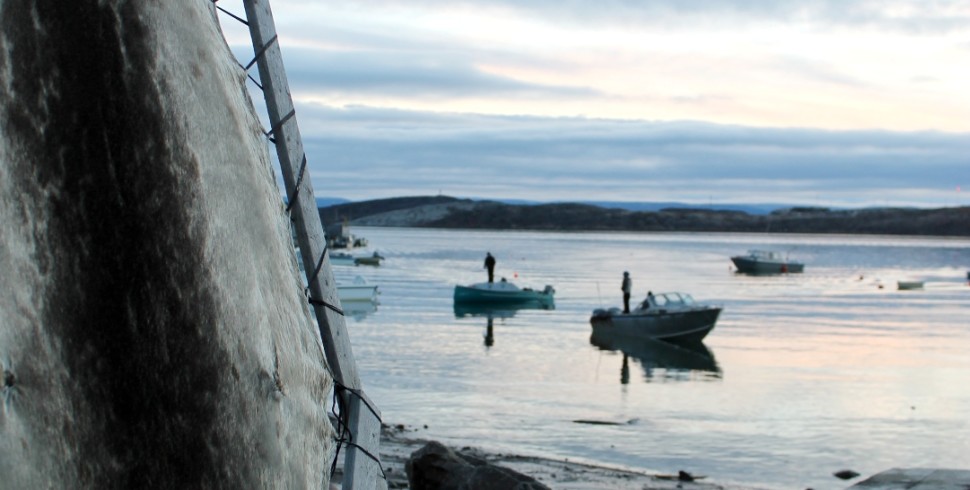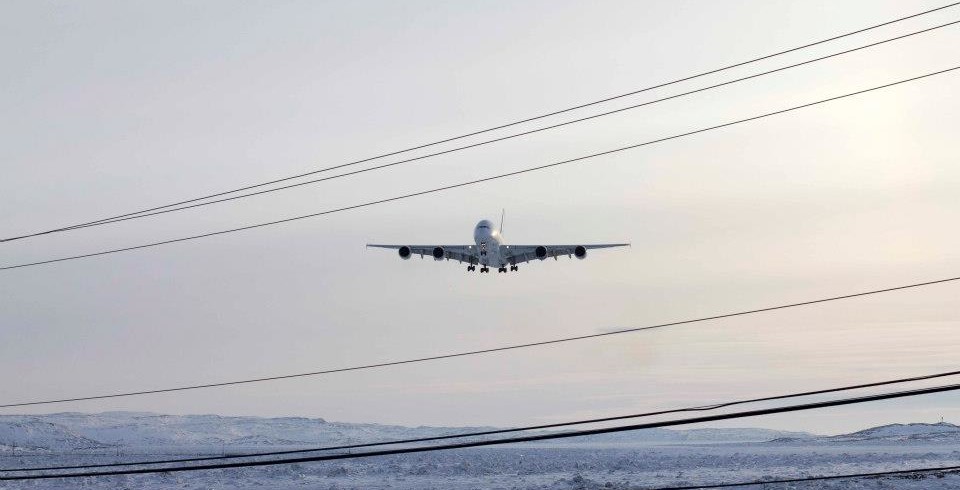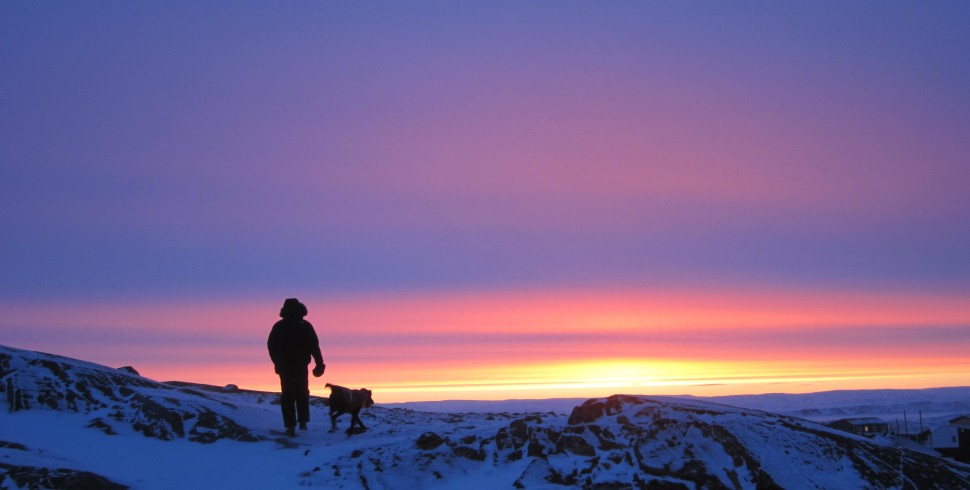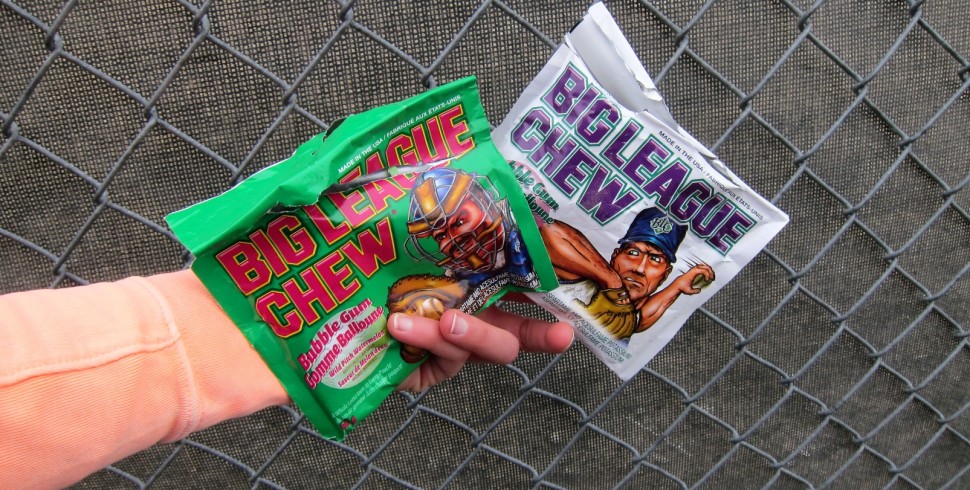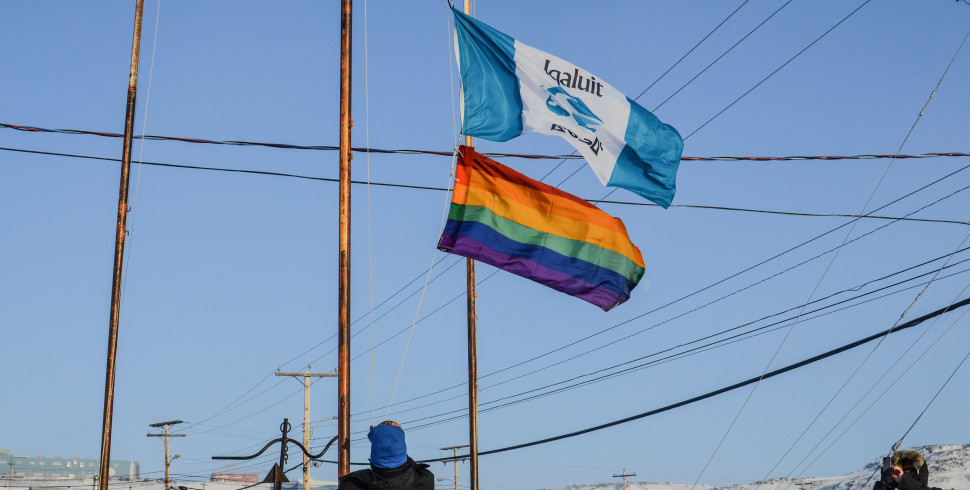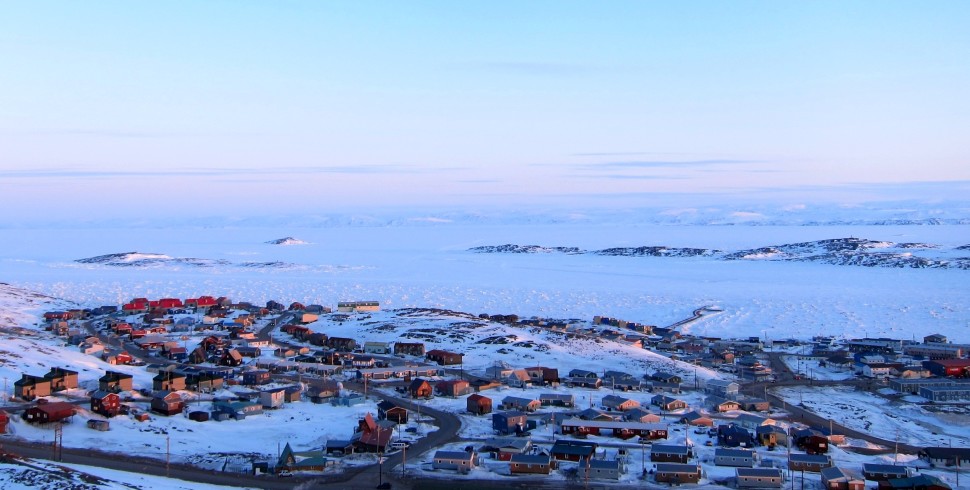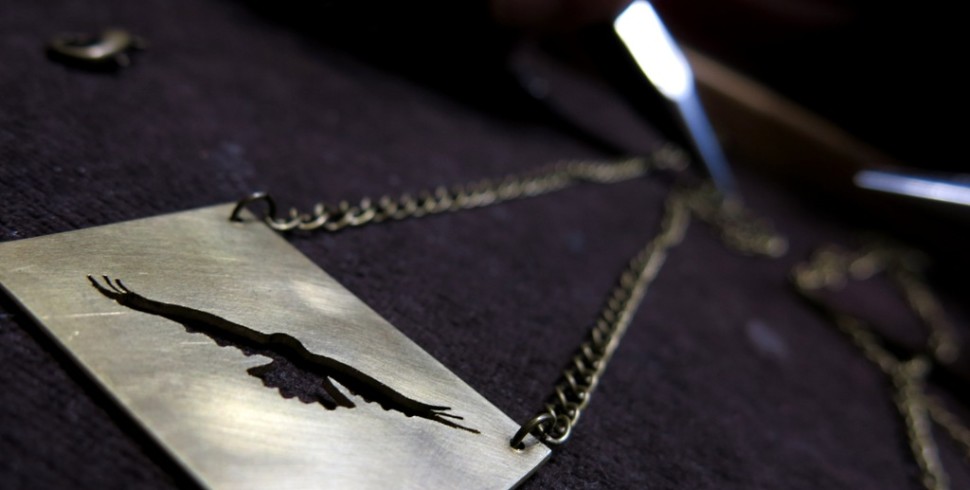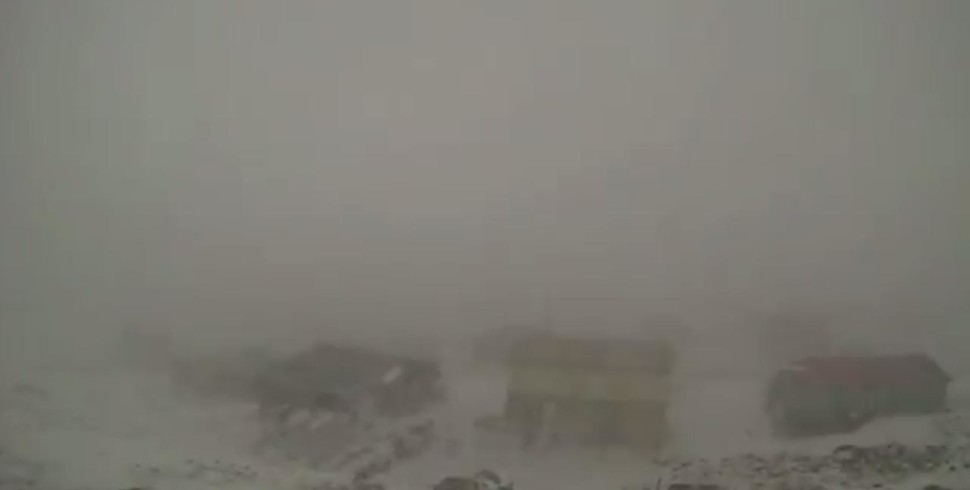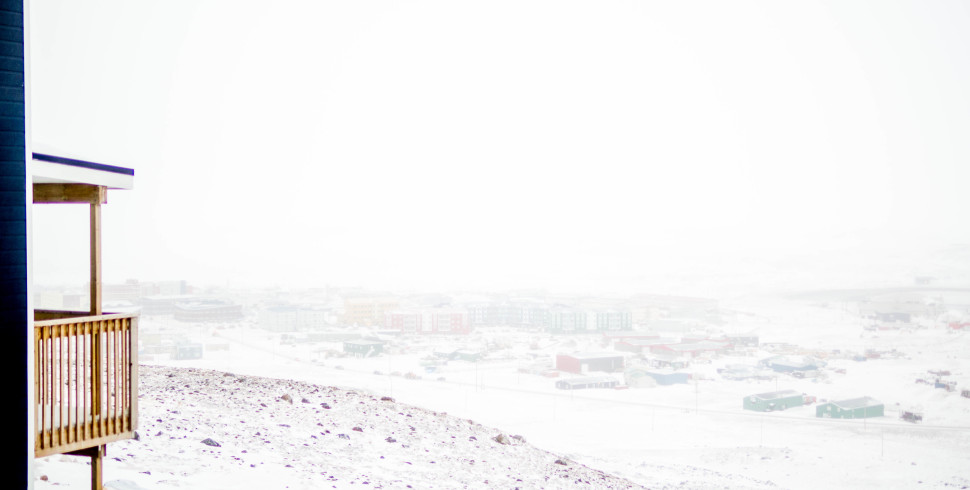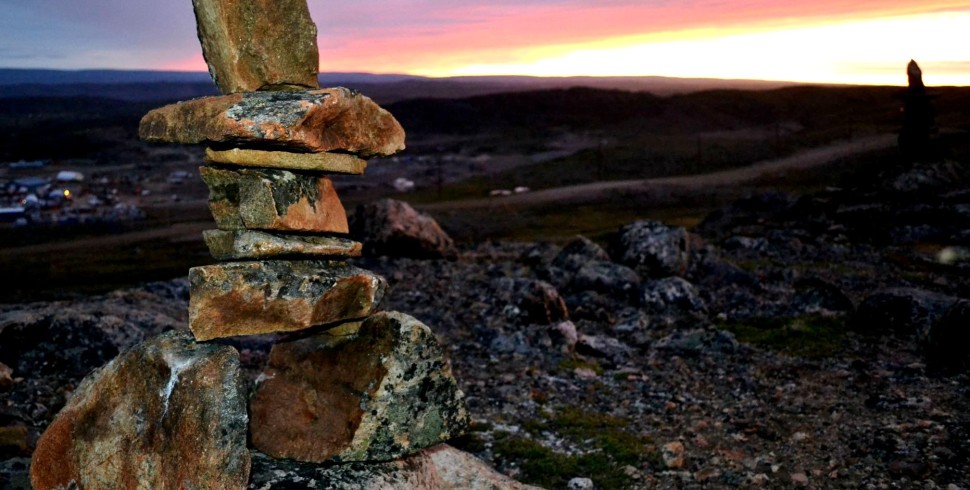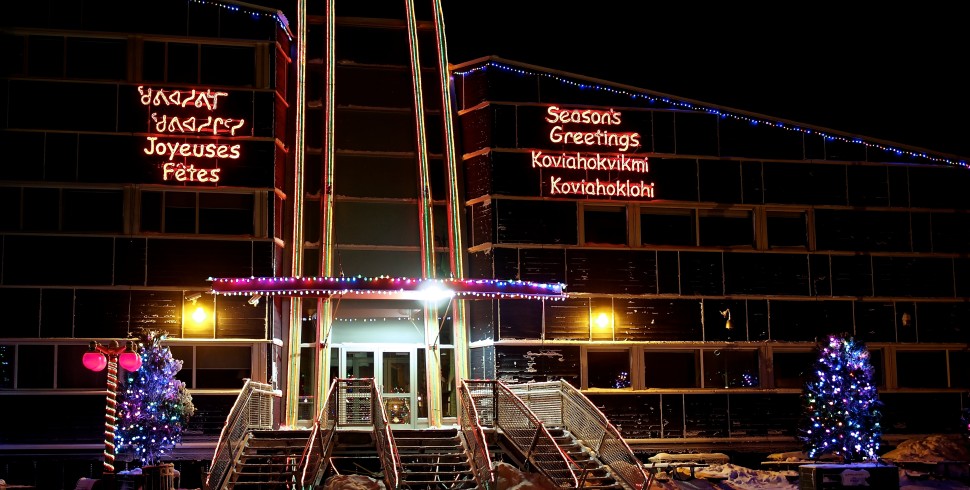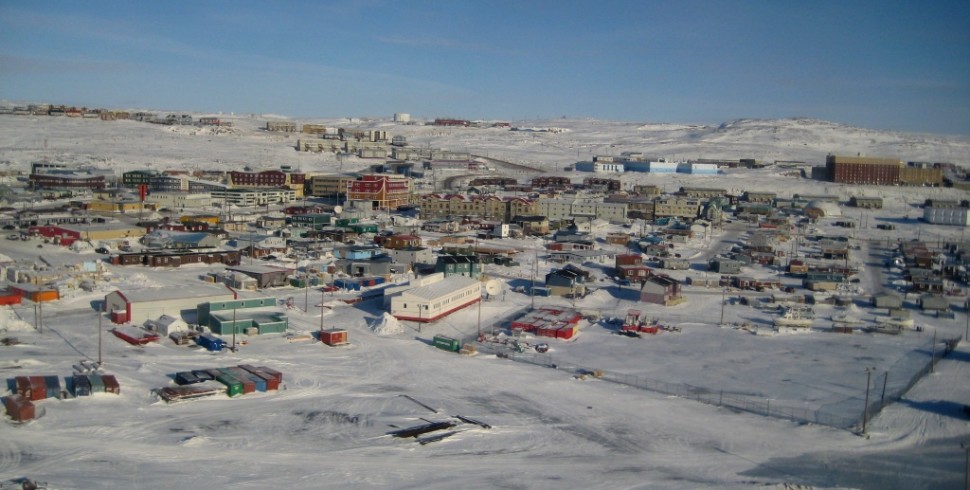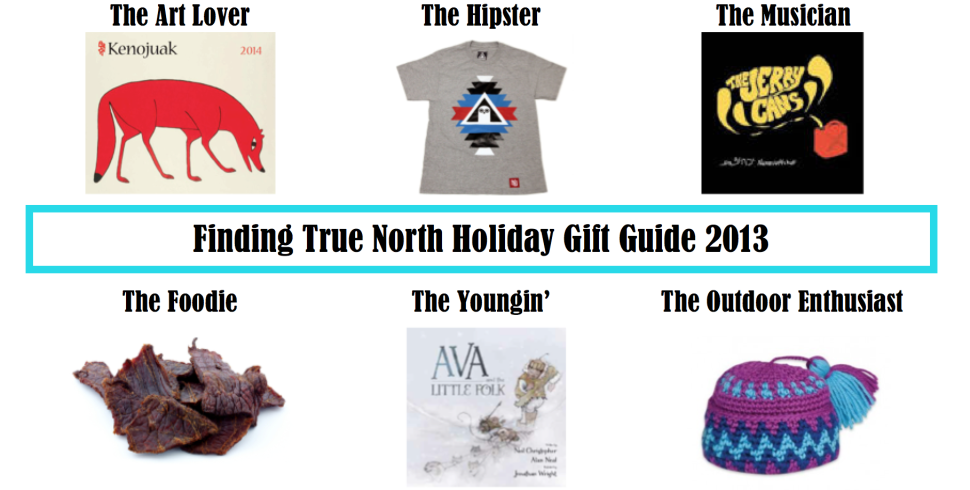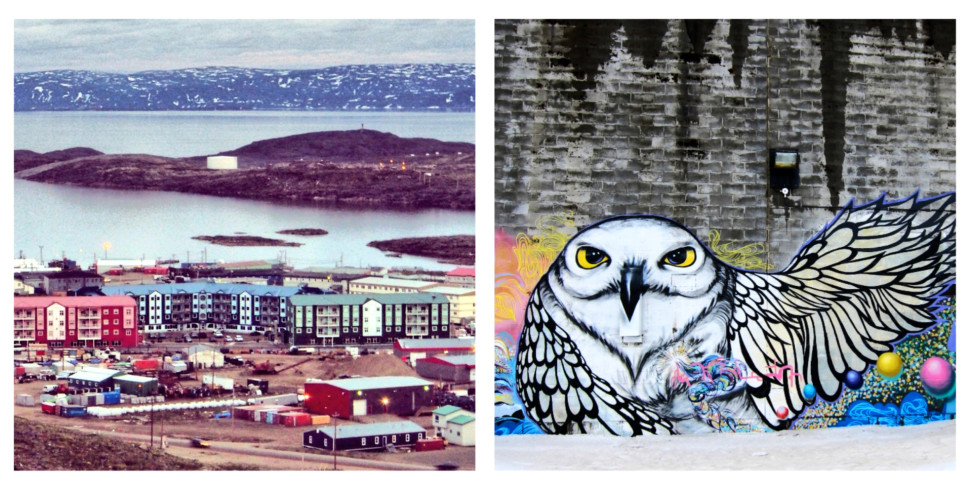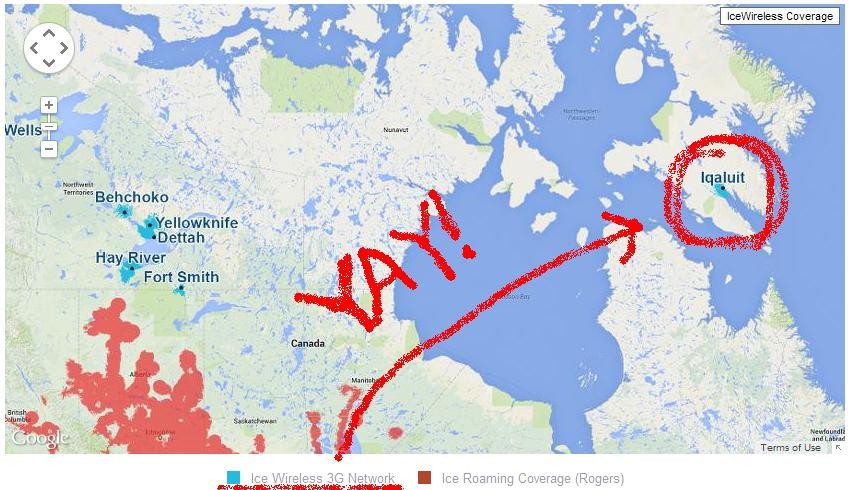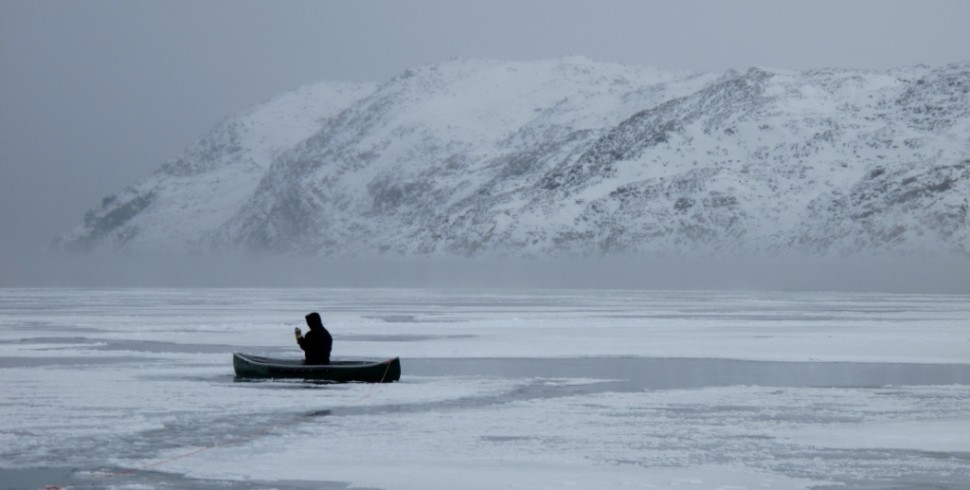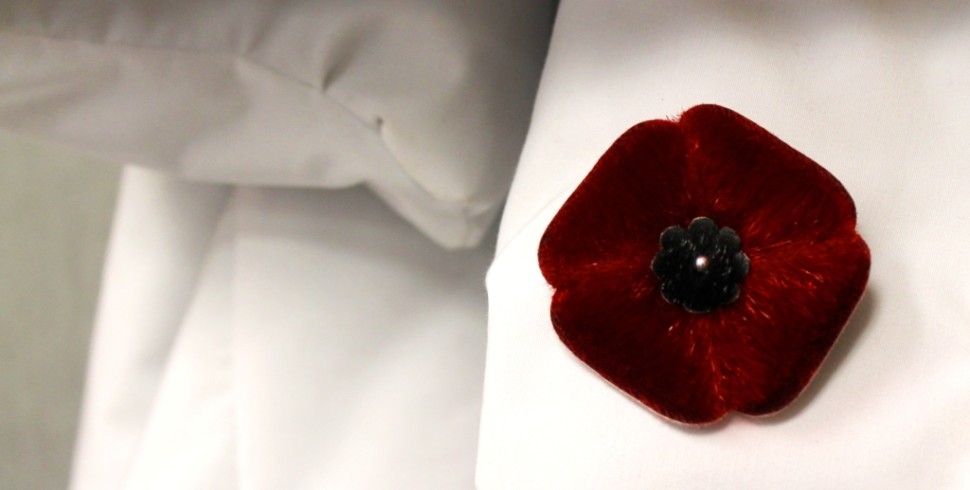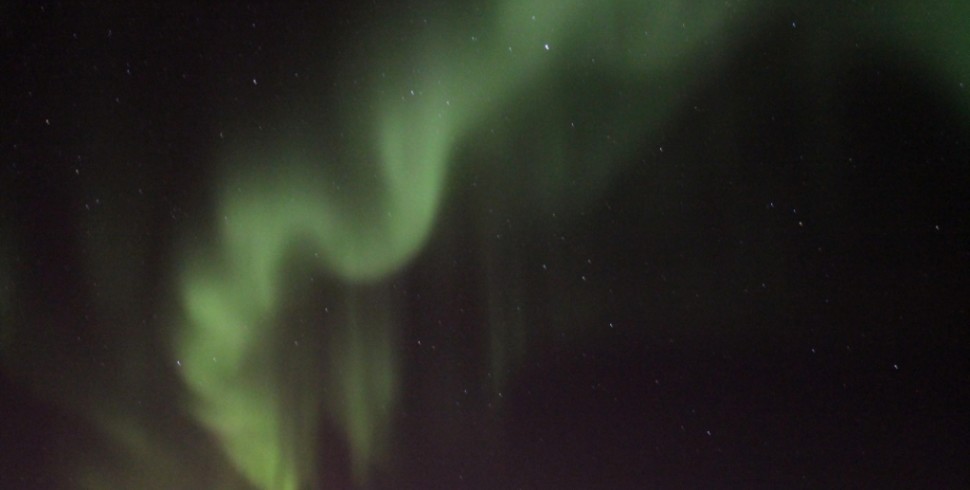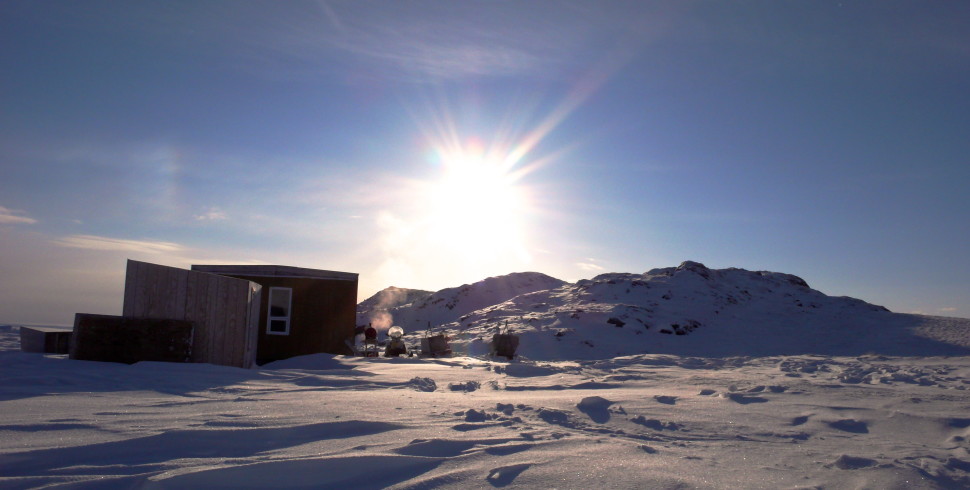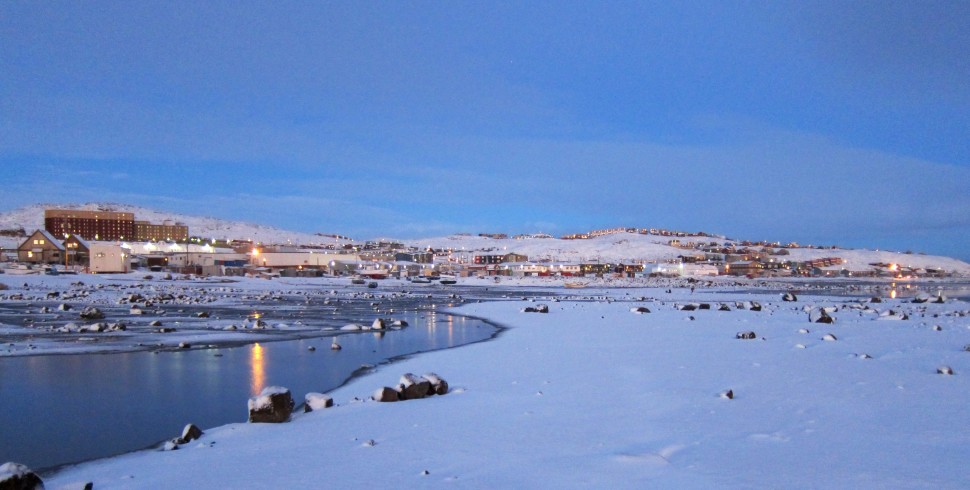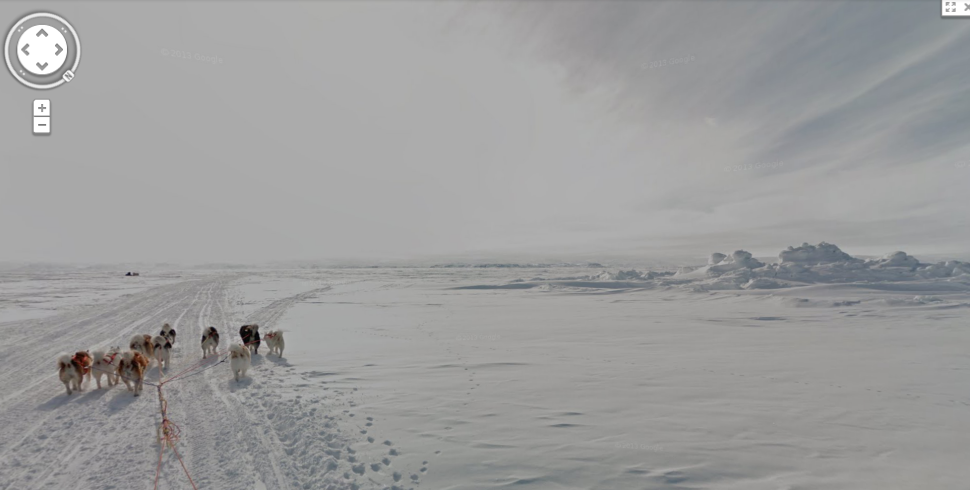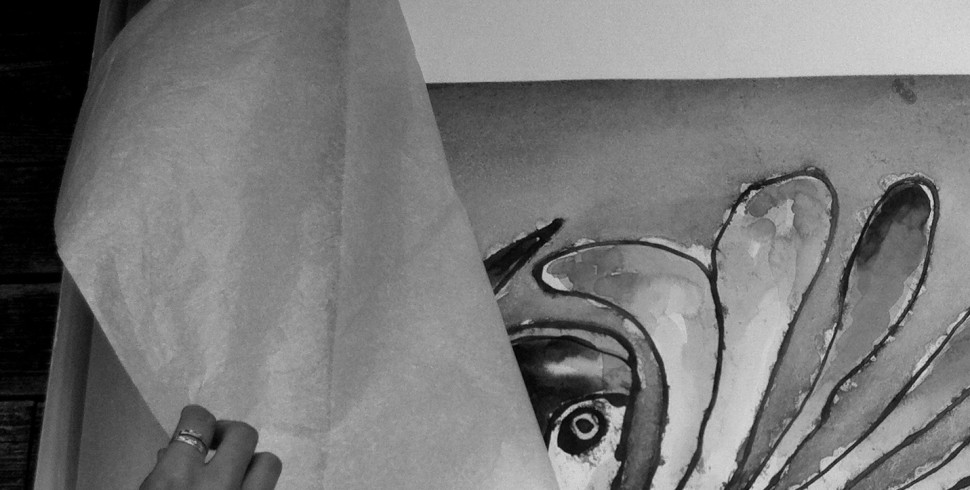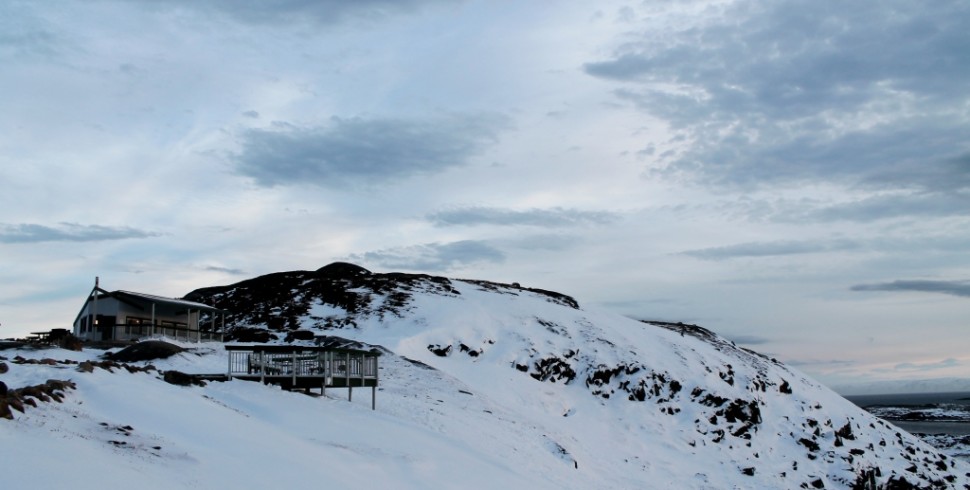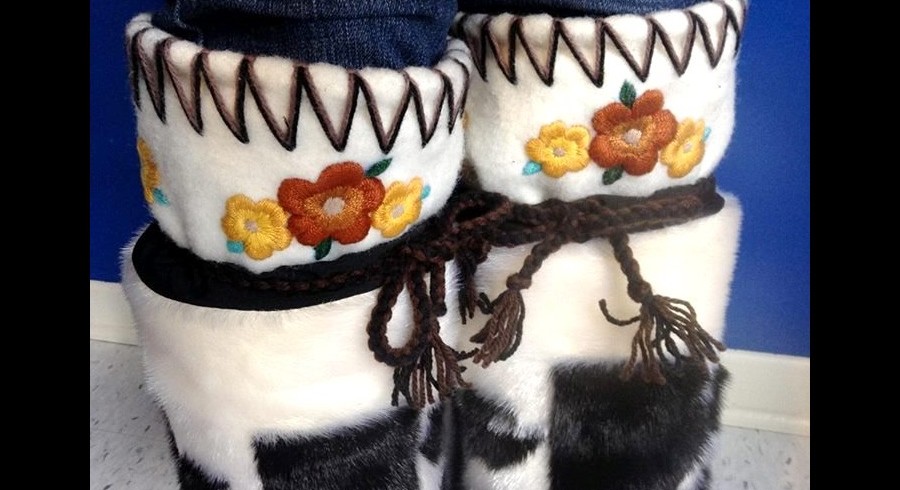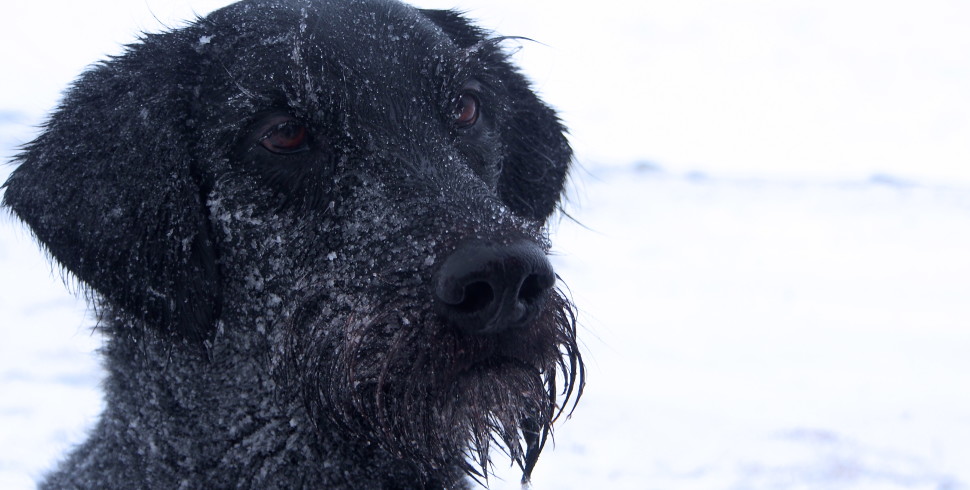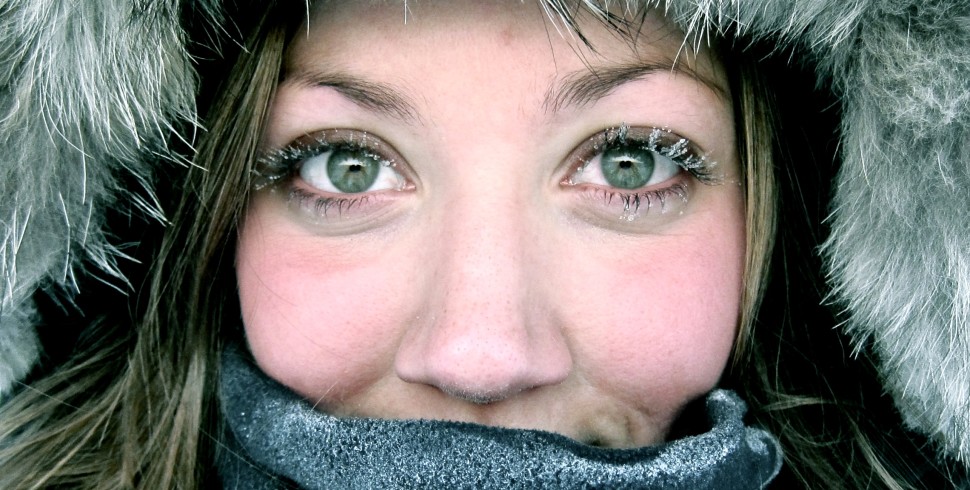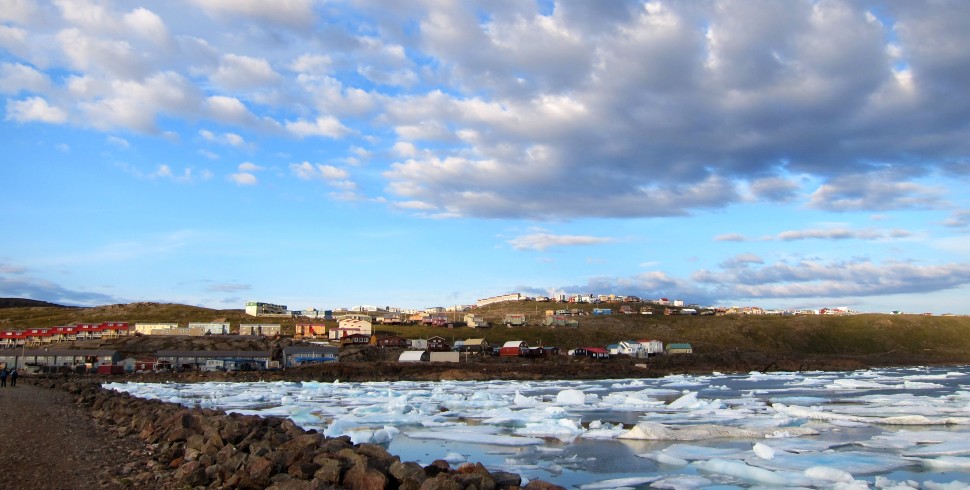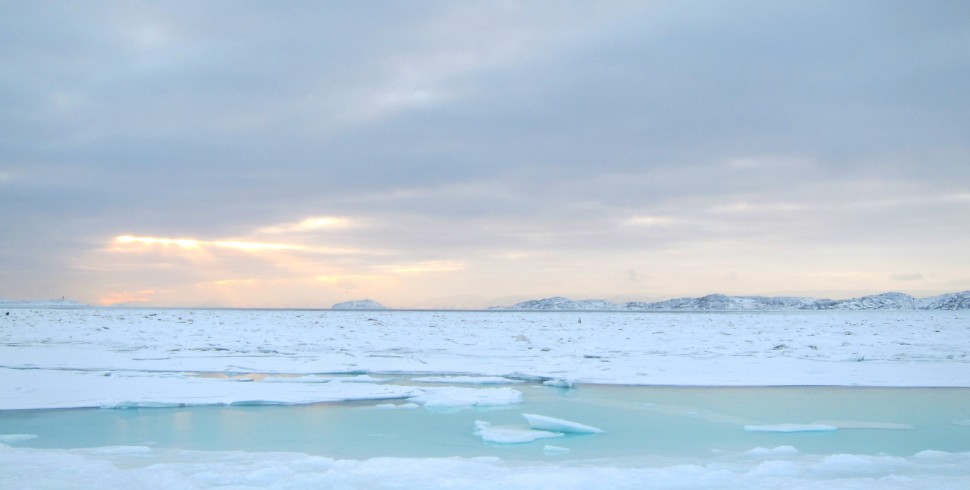As some of you may already know, I was hired as Production Manager for Season 5 of Qanurli?, an Inuktitut comedy series filmed right here in Iqaluit. This year marked a change in the show’s production, as the original cast and crew – Anguti Johnston, Vinnie Karetak, Stacey Aglok, and Joshua Qaumariaq – have just created their own production company, Qanukiaq Studios.
To say the experience was worth it would be putting it mildly. I laughed. I cried. I worked harder and longer than I thought possible. And everyday, I was surrounded by dreamers and teachers and fellow learners. Here’s what I picked up from my time backstage at Qanurli?
1. Making a show entirely in Inuktitut is not easy.
When I say Qanurli? is an Inuktitut comedy show, I mean it: 99% of what is said on camera is in Inuktitut. That means all of the actors have to be pretty darn proficient with the language. And they have to be able to act. And they have to be available.
Then there is the process of developing sides in Inuktitut. Scripts are first written in English, then translated. But, translations are expensive and time-consuming, in part because translators are in high demand and hard to find.
Even when scripts were translated, we found that many actors felt constrained by the words, because the translations weren’t in their dialect. So yeah, not easy, but…
2. Making a show entirely in Inuktitut is pretty flippin’ important.
Despite the fact that Inuktut remains widely spoken across Nunavut, there remains a fear of language loss, and with it, culture, as the two are inextricably linked. Language is so important to Nunavummiut that there are not one, but two measures to preserve and protect its existence: the Official Languages Act and the Inuit Language Protection Act. In it’s 2009/10 Annual Report, NTI focused on Inuktut, saying, “There is perhaps no issue of greater significance to Inuit in Nunavut and with wider political implications than the future of the Inuit language.”
The interplay between language, culture, and identity is not a new concept, nor is it particular to the Inuit of Nunavut. For example, I am originally from Bangladesh, a population that experienced bloody and brutal resistance when they advocated for the recognition of Bangla (my mother tongue) as an official language. As in many post-colonial communities, the continued fight for cultural significance and perseverance is often taken up by youth. That being said, I don’t think I could contextualize the situation in the North better than Qanurli?, so I won’t:
.
3. You don’t know DIY until you’ve made a TV show in Iqaluit.
DIY is kind of the name of the game in Iqaluit, but working behind-the-scenes on Season 5 of Qanurli? out-Pinterested any and all expectations. The most obvious McGyvering occurred with the incredible set and wardrobe design, done by the ingenious Pascale Arpin. You should know that each and every costume, set, and prop you see was created pretty much by hand, aside from perhaps two or three costumes. In a town without a Home Deport or Walmart or art supply store, this is no easy feat – but you wouldn’t know it looking at the shots!
The necessity of self-sufficiency is of course not a surprise for the show’s original creators, who have been working on this project more or less on their own for four seasons. And, if you ask me, the DIY nature of Qanurli? is so much a part of its charm – even if there were more people lending a hand this year.
.
4. It takes a whole village to raise a Nunavut production.
Speaking of DIY and helping hands, there really is no way Qanurli? could exist at any level without the support of the community. First of all, like, half the town was involved in some form or another. Contributions came in many forms: actors who brought their own wardrobes and did their own translations, locations that would not accept rental fees, cast and crew that forfeited vacation time, family time, personal time. All of our actors also have full-time jobs, meaning that after working an 8-hour day, they would come to set and perform for the camera for another seven, eight, nine, sometimes ten hours. Some of them, like principal actors Malaya Qaunirq Chapman and Wager Ford, had to keep up with this schedule for multiple days at a time.
I think the “it takes a village” feeling really hit me on our last day in the studio. We had to break down the entire tent set and clean out the Francophone Centre that night. Only thing was, we didn’t finished filming until, like, 2:00 AM. The actors had already been on set for over nine hours, and yet, when the brooms came out and the drills were plugged in, they took up an implement and started tearing down the space. I don’t think you’d find cast bagging garbage and collecting nails on many productions anywhere else, but up here, it’s the norm.
5. Iqaluit needs better support for the arts.
Yes, the arts community up here is on fleek – but think how amazing it could be with some real backing in the form of dollars and cents. Whether it be tax breaks for arts-related businesses or productions, grants for professional development, fellowships for artists, or infrastructure development, there are so many opportunities for investment. If Qanurli? and Qanukiaq are examples of what Nunavummiut can accomplish under DIY conditions, then imagine what could be created with strategic support (knock, knock, Mr. Trudeau).
.
6. Humour really does traverse language and culture.
So, if it’s not clear yet, Qanurli? is filmed almost entirely in Inuktitut. It’s also ripe with Inuit and Northern humour, situational stuff that could get lost on outsiders. But you know what? The six non-Inuit crew members – including the three southerners – were routinely caught in fits of gasp-for-air, hold-your-stomach, tears-and-snot laughter, even though we couldn’t understand all the words. This is a testament to the directors and actors, yes, but also the power of comedy. If a smile needs no language, then humour must be the ultimate form of intercultural communication. I mean, how else could I have played the part of Yoda on an Inuktitut comedy show?
Season 5 of Qanurli? will air in fall of 2016. In the meantime, keep up with the crew on Facebook, Instagram, and YouTube.

